




Western spent $1.7 million in unbudgeted funds responding to last summer’s pro-Palestinian encampment, with the majority of costs going towards private security.
Documents obtained by the Gazette through a freedom of information request show that 96 per cent of the total — $1,736,548 — was spent on security. This included $920,006 paid to Corporate Investigation Services and $709,406 to Alpha Security Services. Another $20,017 went to the London Police Service and $10,359 to Western Special Constable Service, both police services for “hire-on officers.”
At the Feb. 6 Board of Governors meeting, Western University’s vice-president operations and finance Lynn Logan shared an update on the uni-
versity’s operating budget revealing Western University spent $1.7 million in unbudgeted expenses responding to “the encampment and related protests” last summer.
When asked by the Gazette earlier this year to break down the $1.7 million following the meeting, Western provided a brief statement: “The costs listed in the Operating Budget Update associated with the encampment and related protests were for security services.”
The Gazette obtained a document listing 20 individual contractors and university departments contributing to this figure after filing a freedom of information request.
The document revealed 95.58 per cent was spent on security, 2.76 per cent was spent on cleanup costs and 1.66 per cent was spent on “costs

incurred to support/relocate” scheduled events from May to July 2024.
In those two months, the Western Divestment Coalition held a 60-day encampment calling on Western to divest from military contractors and companies they say are complicit in the Israeli occupation of Palestinian territories.
In a June 2024 statement to the Gazette, Western said, “With all kinds of activities taking place and thousands of visitors on campus, Western Special Constable Service has contracted added security staff to ensure the safety and security of the campus community, including the encampment.”
In a March 27 statement to the Gazette about the FOI request, the university confirmed “CIS and Alpha Security were part of the security measures.”


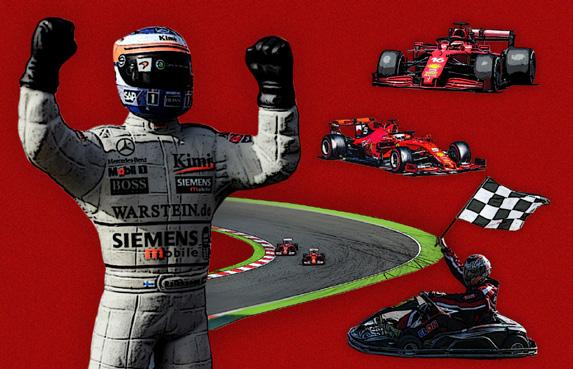

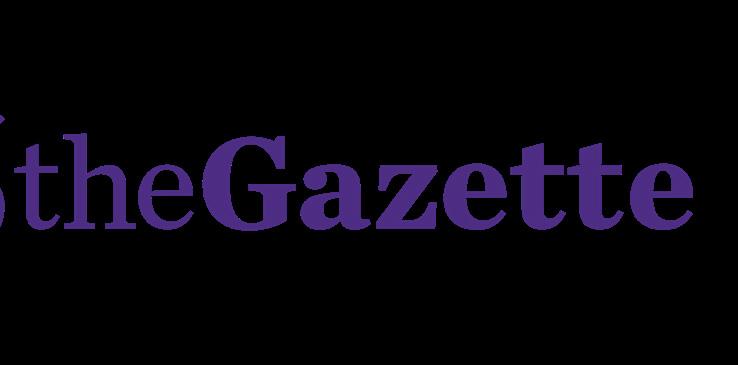
According to its website, CIS specializes in “workplace investigations and strike response” and “provide unbiased third-party information to assist organizations.”
When the Gazette reached out for comment on the services provided to Western, CIS CEO and founder Guy Parent declined to comment, citing client confidentiality.
“CIS is not in a position to confirm or provide confidential information if or when having served any of its clients,” wrote Parent.

Alpha Security Services did not respond to the Gazette’s request for comment in time for publication.
In an interview with the Gazette, Western’s president Alan Shepard declined to comment on security spending by the university.
After security, clean-up costs were the next largest category. Western spent $47,961 in total, with $33,403 on “lawn restoration” from Clintar and $10,074 billed internally by Western Facilities Management for cleaning. The remainder went toward waste removal and powerwashing services from Waste Connections of Canada, Winmar, 1-800-GOT-JUNK and A&A Powerwashing.
The smallest category of unbudgeted expenses were 11 line-items totalling $28,799 for “costs incurred to support/relocate” scheduled events from May to July. In a March 19 statement to the Gazette, Western clarified the events were related to Spring Convocation, which took place from June 10 to 21, 2024.
“There are a wide range of expenses involved in organizing and operating convocation ceremonies. Some expenses normally incurred were increased in this case as we were required to alter our usual plans,” said Western.
The largest event-related expense in this category was $15,450 paid to Western Great Hall Catering for event catering, but it remains unclear what catering events were moved around as convocation usually doesn’t include food or refreshments. Other large amounts in this category included $4,741 to Facilities Management for event setup and $2,844 to the Western Bookstore — now the Dellelce Family Bookstore — for event supplies.

Additional event-related costs included $1,991 to A&B Party and Tent Rental for event supplies, $1,269 to Fastsigns for event signage, $357 to McCulloch’s Costume and Party Supplies for event supplies and $160 to Western Technology Services for event technology.
Transportation expenses also fell under this category, with $1,827 to O’Tools Golf Cart Rentals, $68 to Voyago and $19 to Petro-Canada for gas. Western is not the only university to have its costs incurred due to a summer encampment revealed. In October, the Varsity reported the University of Toronto spent $4.1 million responding to the 63-day encampment staged on its campus last summer.
Protestors erected encampments at several other Canadian schools in summer 2024, including the University of Ottawa, McGill University and the University of Calgary, though not all have disclosed their associated costs.
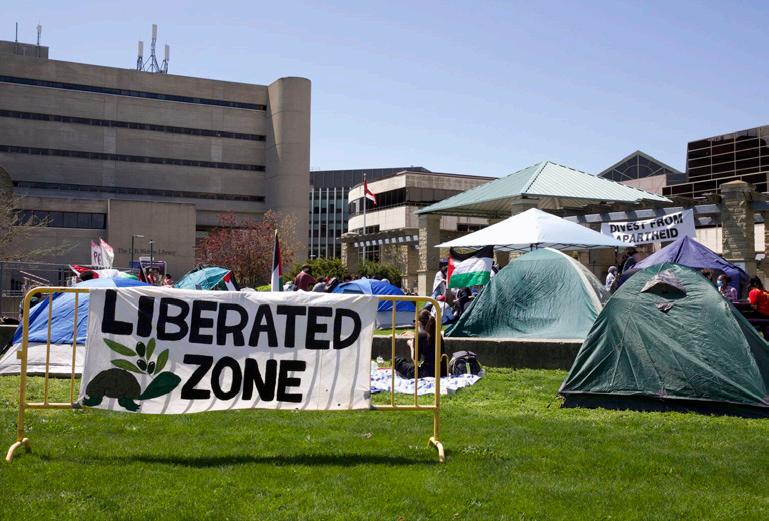
ADSHAYAH SATHIASEELAN EDITOR-IN-CHIEF
MABEL ZHAO NEWS EDITOR
AHindu
club has established Western’s first on-campus mandir in Middlesex College’s multi-faith prayer space to address some students’ concerns about the inaccessibility of Hindu worship places in London, Ont..
Around 80 students gathered on the evening of March 24 to inaugurate the mandir — a sacred place of worship for the Hindu community — in an event organized by the Hindu Students’ Council.
The mandir inauguration included an aarthi — a Hindu prayer ritual — dedicated to the Hindu deity Ganesh, followed by the singing of bhajans — devotional songs — and chants. Students left the ceremony with prasad — a sacred offering, typically food, presented to a deity and returned to the devotees after worship.
Third-year computer science student and HSC president Shivali Sharma said the goal of the new space is to address both the physical inaccessibility of Hindu prayer spaces and a lack of Hindu representation on campus.
“I hear a lot of university students saying we have to travel two buses to the other side of London just to pray,” said Sharma. “That’s what motivated me to start this initiative because I feel that we, as a student organization, should be responsible to make sure our students feel welcomed.”
The Hindu Cultural Centre — one of London’s only Hindu temples — is about a one-hour bus ride or 25-minute drive from Western University’s campus.
According to Sharma, the HSC plans to hold an aarthi at 7 p.m. each night at the new, on-campus mandir. The mandir is housed inside a tall white cabinet that can be opened for prayer and remains closed at other times to keep the space accessible to other faith groups.
Sharma said the HSC team built the cabinet the night before the inauguration, spending about six to seven hours setting it up. She emphasized the multifaith prayer space will remain shared with other groups, including the Muslim Students’ Association.

“We hope to keep the room as neutral as possible and respectful for every religion to come in and worship,” said Sharma, adding that the mandir is intended to be a permanent fixture in Middlesex 15A.
Sharma said the HSC hopes to bring a Hindu chaplain — which she referred to as a “Pandit Ji” — to Western next year to lead daily worship and serve the growing community of Sanatini students, a term referring to those who practise Sanatan Dharma, another name for Hinduism.

Western president Alan Shepard told the Gazette in an interview that the university can appoint a chaplain for any religious group on campus if they bring forward a spiritual leader willing to volunteer for the position and successfully passes the school’s vetting process.
Radhika Parekh, a fourth-year BMOS student and HSC member, described the new mandir as a “really great opportunity.”
“I feel like Shivali brought together a lot of students who are very like-minded in the sense of wanting a religious space,” said Parekh, who is an international student from Dubai.
Parekh said she’s travelled as far as St. Thomas with Sharma to visit a Hindu temple, but understands many students do not have access to a vehicle.
“I felt like it was a very good energy to find a place that was so familiar from what I had back home,” said Parekh. “In these last four years, I’ve had a chance to go to temples nearby, but honestly it gets a little inconvenient sometimes.”
Parekh, who has known Sharma since her first year at Western, said the HSC president has been dedicated to building a space on campus for Hindu worship for a long time.
Sharma founded Western’s HSC last year, describing it as more “spiritually inclined” compared to other Hindu cultural clubs, such as the larger Hindu Students’ Association.
“I’m from London, so I don’t have an issue travelling anywhere, but this was for students to feel at home,” said Sharma.
A week before the mandir inauguration, the HSA took a group trip to the Hindu Cultural Centre. Students spent just under two hours on the bus travelling to and from the temple, which is located in the south end of London.
Third-year computer science and Ivey Business student and HSA vice-president communications Pranav Arora said the club organizes trips to the temple three to four times a year.
He added religious clubs on campus, like the HSA, are meant to provide students with a sense of belonging and a safe space to explore and practise their faith.
Arora believes there are many ways to pray and devote yourself, and going to a temple is just one of them.
“I wouldn’t necessarily say we’re advocating for more places of worship, but we are advocating for a sense of community,” said Arora.
Sharma said the mandir opening wouldn’t have been possible without the help of Western’s Office of Equity, Diversity and Inclusion, the MSA, Chinmaya London Mission and St. Thomas Har Har Mandir. Sharma credited the Chinmaya London Mission with leading Gita classes — educational sessions focused on teaching a 700-verse Hindu scripture called the Bhagavad Gita — every Monday and donating religious texts.
“This whole initiative was supported by all of these big organizations. They know we’re doing this, and it was to mitigate the spiritual need that everyone craves,” said Sharma. “We just had to go through with it.”

OM SHANBHAG SENIOR NEWS EDITOR
MABEL ZHAO NEWS EDITOR
The USC announced its newly hired vice-presidents on April 2, completing the executive team for the 2025–26 school year.
The five vice-presidents will join incoming University Students’ Council president Kat Henricus.
Saad Ahmad is stepping into the role of the USC’s vice-president student engagement, Rhegan Whelpley will be vice-president orientation and programming and Wade Masse will be vice-president student services. They will work with elected incoming vice-president university affairs Jenna Ijam and incoming vice-president external affairs Omar Sayyed.
Ahmad, a fourth-year Ivey Business School student, said his top priority as VP student engagement is making sure students have access to all the information the USC provides in one place — whether through the USC Now app or another platform.
He said he aims to make students aware of USC initiatives, especially with the time and effort used to create these projects.
“I want to make it so that students know that we’re separate from Western and that we have our own place here on campus,” said Ahmad.
The VP student engagement role focuses on developing community engagement initiatives and fostering communication between students and the USC.
Whelpley, a fourth-year BMOS student, said she’s ready to bring students into the spotlight as the VP orientation and programming. This position has direct oversight over Western’s Orientation Week, other social events and large-scale programming for students.
“I think it’s really important to continue making the USC a place that echoes student voices, and is making programming that students want to see,” said Whelpley, mentioning the idea of a USC dance competition. She said her experience as vice-president events

on the Social Science Students’ Council and as a programming assistant on the Social Science soph team allows her to “grasp the understanding of what goes into orientation, how we make programming work and the behind the scenes of supporting these students.”
Masse, a fourth-year international relations student, started his journey with the USC as a Food Support Services volunteer, a role under the student services portfolio.
“I think that was a gateway where I was able to see a lot of the merit in the programs the USC offers and where I could use my time to feel like I was giving back to my London community here,” said Masse, who held the role of associate vice-president student services for this past school year.
The VP student services oversees USC-led services like the Food Support Services, the clubs system, and PrideUSC.
Masse noted the effort past VP student services executives have put into bringing more programs to students, pointing to the Peer Support Centre, AI Learning program and professional development programs. Masse said his biggest priority is to expand and grow the USC’s program offerings to reach more students.
Ahmad, Whelpley and Masse were selected by six-person internal hiring panels. The outgoing USC president, Emilie Kalaydjian, outgoing VP
GABRIELLA MCKENNA NEWS EDITOR
Schulich dean Dr. John Yoo has replaced Ivey dean Sharon Hodgson as Western’s highest-paid public employee.
According to the 2024 Ontario Sunshine List, Yoo received $607,885 in compensation — an increase of $23,058 from last year — making him the 48th highest-paid public sector employee in Ontario and one of two Londoners in the top 50. The other Londoner in the top 50 is London Health Sciences Centre vice-president Kevin Chan, who ranks 30th and earned $683,592 including benefits.
Hodgson retired from her position at the Ivey Business School on June 30, 2024. Before her departure, she earned $328,685 for the first six months of the year — dropping her to the 35th highest-paid earner at Western University. She had been the university’s highest-paid employee from 2021 to 2023, earning a total of $596,482 between salary and benefits in 2023.
The Sunshine List is an annual record of the salaries and benefits of Ontario public sector employees who made over $100,000 that year. The 2024 list was released by the provincial government on March 28.
In the 2023–24 school year, Western employed 1,432 full-time faculty members and 2,789 fulltime administrative staff. A total of 1,874 Western employees made the Sunshine List in 2024, an increase of 116 from 2023. The average salary of Western employees on the list was $164,741, marking an increase of $1,756 from 2023.
Yoo wasn’t the only Schulich School of Medicine and Dentistry faculty member topping Western’s list of highest-paid employees. Dr. Anthony Tang, an adjunct Schulich professor and medical doctor, was the second highest-paid public employee at Western, earning $550,000 in 2024. Eleven of the top 50 Western earners — including three of the top 10 — were from Schulich. Another 22 of the top 50 — including three of the top 10 — were employed at Ivey.
Western’s top-50 highest paid employees collectively made a total of $17,915,815 in 2024.
Western president Alan Shepard was paid a salary of $484,000 in addition to $42,205 in taxable benefits last year for a total of $526,205, making him Western’s third highest-paid employee. His salary increased by $4,400 between 2022 and 2023 but did not change this year, though his benefits increased by $930.
In 2022, Shepard was the highest-paid president of all public Ontario universities – earning $518,718 between his salary and benefits, but he now ranks fourth.
Meric Gertler, University of Toronto president, earned $635,776 last year — making him the highest compensated university president in Ontario for the second year in a row. Gertler earned $45,161 more in 2024 than the previous year.
Huron University College president Barry Craig earned a salary of $453,000 in 2024, with an additional $622 in benefits for a total of $453,622, an increase of $19,747 from 2023. Craig ranked the eighth-highest-paid university president in Ontario between his salary and benefits for both 2023 and 2024.
In comparison, King’s University College president Robert Ventresca — who became interim president in September 2024 following the departure of former president David Malloy — earned $249,300 in salary and benefits last year.
Malloy, who left his position on Aug. 31, 2024, earned $321,918 including benefits. He is currently suing the Catholic affiliate college for wrongful dismissal, alleging he was terminated for his progressive views and support for the LGBTQ+ community.
Former Brescia University College president Lauretta Frederking earned a total of $311,484 with benefits in 2024, including $120,539 in her role before the affiliate college’s merger with Western on May 1, 2024 and $190,945 as Western’s senior executive advisor of strategic initiatives and projects.
for the hired position and USC senior manager of people and development are non-voting members who provide suggestions to the three voting members who make the final hiring decisions. The voting members are the incoming president, a USC board of directors member and an elected USC councillor.
The USC’s incoming VP internal, Jenna Ijam, and VP external, Omar Sayyed, were voted in by council members on Feb. 28.
Seventy of 87 council members — 80.5 per cent — cast a ballot to elect the other vice presidents, a one per cent decrease in participation since last year. Only incoming and outgoing councillors are eligible to vote in this election and the results of each councillor’s vote will not be released publicly.
Ijam was elected vice-president internal with 49 votes — 70 per cent of the ballots — and will be responsible for advocating to Western University on student issues.
She currently serves as a USC science councillor and an undergraduate student senator-at-large. She ran on a platform focusing on academics, student experience and wellness as well as equity and accessibility.
“I’m grateful for everyone that elected me and consulted with me,” said the fourth-year medical sciences student. “My platform truly was built on their voices.” Ijam said that — as VP internal — she wants to
build a strong relationship with incoming student senators and get started on a long-term strategic plan for Free the Dot., a USC pilot project that provides free menstrual products in campus washrooms.
Sayyed was elected VP external in the third round of ranked ballots with 36 votes — 51.4 per cent of the ballots. He will be responsible for advocating for student concerns to external stakeholders in municipal, provincial and federal governments.
Sayyed is the Undergraduate Engineering Society president and a former USC councillor. He also served as vice-president of advocacy for the Engineering Student Societies’ Council of Ontario, representing the interests of engineering students at the provincial level.
The fifth-year integrated engineering student ran on a platform focused on improving affordability, transit and infrastructure, student civic engagement and advocating for increased provincial funding for universities.
“There’s so much that I want to get done,” said Sayyed about his new position. “I’m feeling excited and nervous at the same time.”
— With files from Finn Toporowski and Sophia Schiefler

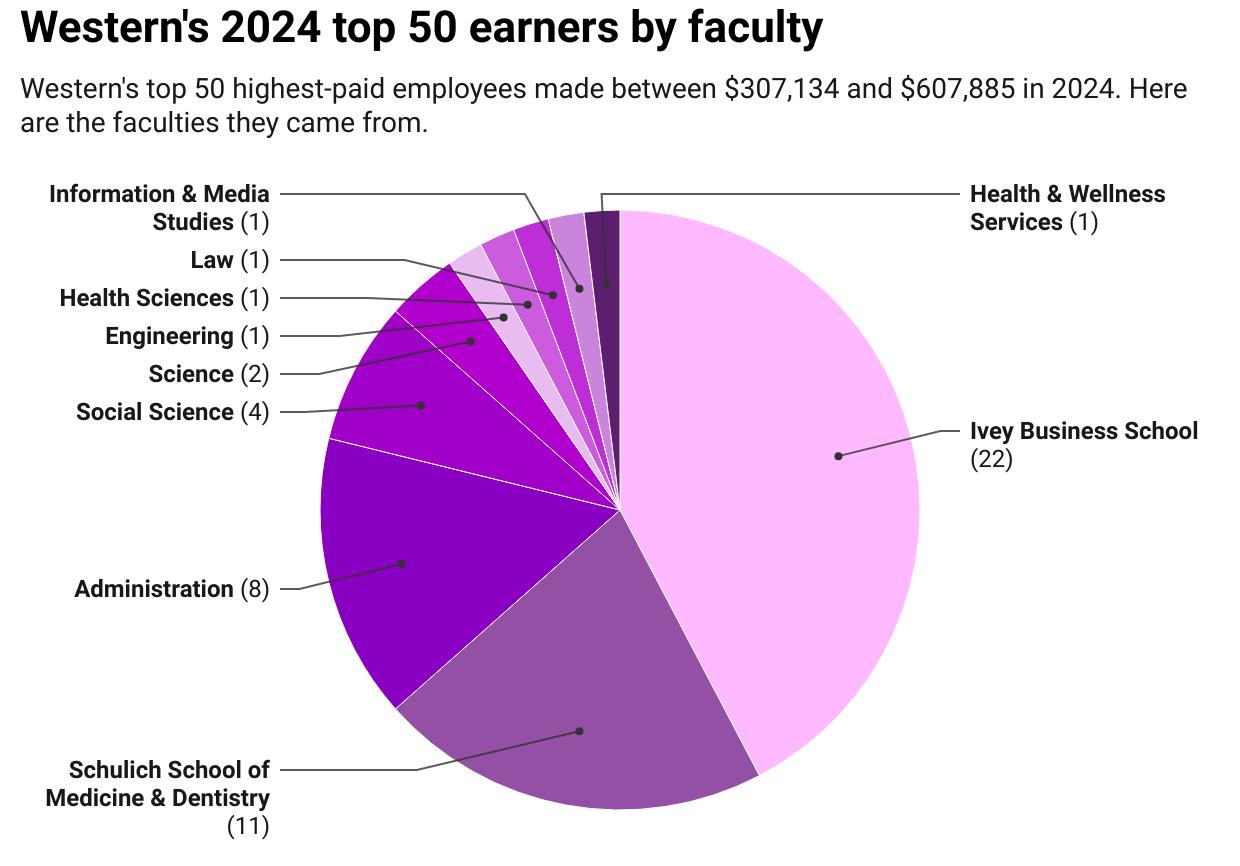

TAITE BOOTH NEWS INTERN
In a time when we are always one click away from news, politics and headlines, constant access to information can become stressful and overwhelming. Whether it be navigating classroom discussions, feeling political and social pressure or just spending time on social media, university students can be prime for this type of anxiety. This stress and emotional toll can affect students socially, personally and academically.
Hugo Coimbra Machado, a fourth-year political science PhD candidate at Western University, defines political stress as “an intense feeling or experience people get from politically relevant events, such as elections or just overall political conflict.” Machado said he has seen a rise in political
stress since the beginning of the year with recent elections in the United States and tariffs threatened to be imposed on Canada. A study during the U.S. presidential election revealed that 77 per cent of Americans reported the future of the country as a significant source of stress in their lives.
Political stress goes hand in hand with “doomscrolling,” which is described as an urge to hit refresh and scan headline after headline. Doomscrolling was named one of Oxford Dictionary’s words of the year in 2020.
So, if news and politics cause us so much stress, why are we inclined to keep watching or scrolling?
Machado explains this is because of negativity bias, which drives people to seek out sensationalist political news — stories intended to provoke public interest, even at the expense of accuracy.
He offers three strategies for students to cope
with political stress: regulating media consumption to ensure you are not scrolling all the time, seeking accurate information on the news and not just gravitating towards shocking news headlines, and choosing political battles wisely.
Machado says because politics inherently involves conflict, it’s important to engage thoughtfully and focus on issues that matter most to you. He emphasizes that understanding how political systems work can help reduce anxiety about potential conflicts.
Fourth-year political science student and cochair of NDP Western, Marek Brooking, has experienced his fair share of political stress, specifically surrounding recent U.S. and Ontario provincial elections.
“I don’t know if any young people are going to be able to afford a home if things keep going the way
they are going,” says Brooking, discussing what causes him political stress.
Brooking explains he has seen increasing stress among his peers because they are dealing with new political issues, like climate change, that differ from those of previous generations.
“Social media is definitely not helping just because of how subjective it is and how chaotic the disinformation is out there,” Brooking adds.
Brooking believes avoiding social media such as X — formally Twitter — and TikTok will relieve stress. But, he also thinks it’s important for young people to get involved, have their say and determine the future.
“It has been very rewarding for me because you get to talk about things you want to talk about, and then you can start making an impact yourself,” Brooking says.
PANIZ VEDAVARZ SENIOR CULTURE EDITOR
W
estern alumni Loud Luxury returned to their roots last Thursday, transforming Mustang Lounge into a nightclub-like floor as part of Purple Finale.
The DJ duo — Joe Depace and Andrew Fedyk, both Western University graduates — delivered a high-energy set filled with electronic dance music remixes and nostalgic throwbacks.
The show kicked off with a back-to-back style opener featuring Faze — a regular DJ at Delilah’s — and Tifi.
“Hands up if you’re ready to see Loud Luxury,” Faze shouted, followed by cheers from the crowd.
By the end of the opening set, the lounge was
packed, shifting the energy from subdued to electric.
Trenyce Rowe, a fourth-year psychology student, said she attended because her boyfriend impulsively bought tickets for the two of them.
“It’s just some good rave vibes but nothing like Loud Lux,” said Rowe. “So we are getting hyped. We’re drinking. It’ll be fine.”
Before Loud Luxury took the stage, the University Students’ Council executive team snapped a selfie with the crowd. The show marked the third and final event in the Purple series organized by the USC this year — the first was Swae Lee for Purple Frost and the second was Alan Walker for Purple Beats, both in January. The trademark slogan for the Purple Finale this year was “Go big and go home.”
USC president Emilie Kalaydjian said the event was organized in response to student feedback expressing

a desire for more EDM and house music events.
“Leaving the USC is always very bittersweet, but I think tonight it just reminds us why we’re all here,” said Kalaydjian.
Depace and Fedyk visited various spots on campus throughout the last week, including Ivey Business School classes. In a TikTok published on the day of the event, the two are seen standing on UC Hill with the caption “returning to the school we started Loud Luxury at 10 years later.”
“Not so long ago, we were out in this crowd,” said Depace at the show. “Now we’re playing for you all tonight.”
As the duo took the stage, the crowd erupted.
“This is your moment to show you’re the best fucking school in Canada,” Fedyk shouted into the mic.
The tracklist consisted of a mix of house and
EDM music, along with nostalgic throwback tracks.
The set featured a remix of the White Lotus theme song, Taylor Swift’s “You Belong With Me” and a surprise throwback to “Sweet Caroline” — a nod to The Spoke and Rim Tavern, where the song is a staple among performers at the campus café.
“The energy is contagious,” said Rebecca Vaughan, a fourth-year food and nutrition student who said she’s been a fan of EDM for years now.
Though the event was scheduled to end earlier, Loud Luxury kept the music going, promising not to stop until they were kicked off stage. They wrapped up their set at 11:45 p.m. before heading to an after-party at Delilah’s.
“We fucking love you, Western,” they said, closing the show with all the chaos that defines a true Mustang party.

CHIARA WALLACE SENIOR SOCIAL MEDIA AND LAYOUT EDITOR

Inever thought my longest relationship in university would be with this column. But it’s time to end it.
I’m no stranger to the “I think we need to talk” and the dreaded “Can we stay friends?” texts. There’s nothing like being humbled by someone who liked you first. But now, it’s my turn to send that message.
I never really thought about how I’d end this column. When I started it, I was running off the high of messy anecdotes, questionable decisions and the naïve belief that I’d never run out of stories.
I still remember publishing my first article and wondering if I was saying too much or not enough. In hindsight, I have definitely said too much.
And now it’s my last confession.
It’s bittersweet writing this final piece — like ending a relationship with a lot of love but no future. I swear it’s not you, it’s me.
I’m graduating soon, moving into a different phase of my life, where I’ll probably continue to make questionable dating decisions, just make it business casual.
Ending this column does feel like a breakup. I’ve grown with it. I’ve found confidence, catharsis and maybe even a little community by writing about my
love life in far more detail than anyone ever asked for.
One of my friends recently told me I was brave for being so candid. Brave is one word. Unfiltered is another. But in all seriousness, I’ve never minded being honest about my experiences — the weird, the messy, the kind of stories that have people asking me who I’m writing about.
The way I see it, if I’m going to keep running into red flags and emotionally unavailable frat boys, I might as well turn it into entertainment. If I can’t get into a stable relationship, I can at least get a laugh out of it.
Of course, there’s a limit to how much one girl can overshare before it becomes a liability. I’m running low on fresh material, and there’s only so much I am willing to expose about myself on the record. And frankly, judging by the angry reactions at the bottom of my articles, I think I’ve
mildly pissed off just enough people for now. Maybe I’ll write again come September, fresh off some whirlwind summer fling with a man who uses punctuation properly and knows a little too much about star signs and Taylor Swift. Or maybe this is where I hand over the helm to someone else. Either way, thank you. Thank you for reading my stories, for laughing with me (or at me), and for letting me confess — over and over again. If you need me, I’ll be rewatching all the Bridget Jones’s Diary movies in my pyjamas, waiting for a response from my next Hinge match. xoxo


PANIZ VEDAVARZ SENIOR CULTURE EDITOR
Walking into a Friday night house party, I found BEEF mid-set in a packed living room, where empty beer cans crushed underfoot and fans pressed close. Drummer Drew Glazier, shirtless mere minutes into the show, pounded away as if trying to split the kit in two.
“BEEF is just fun. We practise, but it’s an excuse to hang out with your friends. It’s brought me way closer to these guys,” says Drew.
When BEEF first watched Tower Lane — another student band — perform, they immediately thought they could do the same, but better. It took a bit of alcohol, some raw ambition and a whole lot of attitude to spark that drive.
“They’re like our biggest inspiration, but we also want to be better than them. It’s a hero kind of inspirational relationship,” says guitarist and second-year popular music student Braden Kuzmarov.
BEEF’s four members are Braden, Drew, a thirdyear popular music student, Marcus Kuzmarov, a first-year law student and Julian Vinizki, a fourthyear BMOS student.
While BEEF primarily plays covers — ranging from Radiohead to The Backseat Lovers — the show I attended featured two original songs: “Come Down (Why Are You All the Way Up There)” and “Cheerleaders.”
“Whatever Tower Lane plays, we see what they do, and then we play a better version of it,” Drew says, only half-joking.
BEEF came together gradually, with its members meeting through a mix of chance and shared circles. While Marcus and Braden are brothers, Marcus and bassist Julian first reconnected by chance at a park, having previously crossed paths through extracurriculars and their parents.
“Oh, we both play music — let’s play music together,” Marcus recalled.
The band debuted at the 2023 Battle of the Bands at The Spoke and Rim Tavern — losing to Tower Lane — but it wasn’t until after that show that Drew joined the lineup, solidifying the group.
The name BEEF was born out of chaos — fitting for a band rooted in lighthearted dysfunction. During one rehearsal, nothing was getting done,
tensions were high and their drummer at the time abruptly walked out without a word.
“‘We should call ourselves BEEF,’ someone jokingly suggested. And I’m like, shut the fuck up,” Marcus laughs. “And then yeah, that was kind of the end of it.”
BEEF has played everything from sweaty basements to iconic stages. They’ve performed at frat parties, gigs at bars like Joe Kool’s and outdoor house shows for HOCO and St. Patrick’s Day.
“It’s the same thing every weekend out at Western, going out is boring and just to get drunk,” says Braden. “Playing house shows gives people something different. It’s still at a house, but it feels like a little escape, like going to the movies.”
While house parties are their specialty, BEEF has also played their share of iconic venues, including Toronto, Ont. spots like the Horseshoe Tavern, Imperial Pub and Junction Underground.
“We sold out the Rogers Centre one time, but our band was different. It was actually called Metallica,” Drew jokes.
Each member of BEEF found their way into music differently, but all started young. Marcus grew up playing alongside his brother, Braden, who also has a solo project called “Braden K.”
“For me, something kind of clicked in first year,” Braden explains. “I was like, I’m going to pursue this more. But yeah, it’s kind of been something in the background since I was super young.”
Drew got into drumming in Grade 7 after his dad brought home a used drum kit from the furniture store he owned.
“I was playing it for like three minutes, and then my older brother fucking attacked me, and I knew right from there that I wanted to be a drummer,” he says.
With graduation on the horizon, the future of BEEF is uncertain. The band has tossed around the idea of a name change.
“Might make a band called Fish, maybe Pork Chop or something,” Braden quips — but nothing’s set in stone.
Whether they continue under a new name or go their separate ways, there’s a sense that this chapter for the band might be ending, but likely just for the semester.
“I love you guys. I want it to be on the record,” Drew closes.

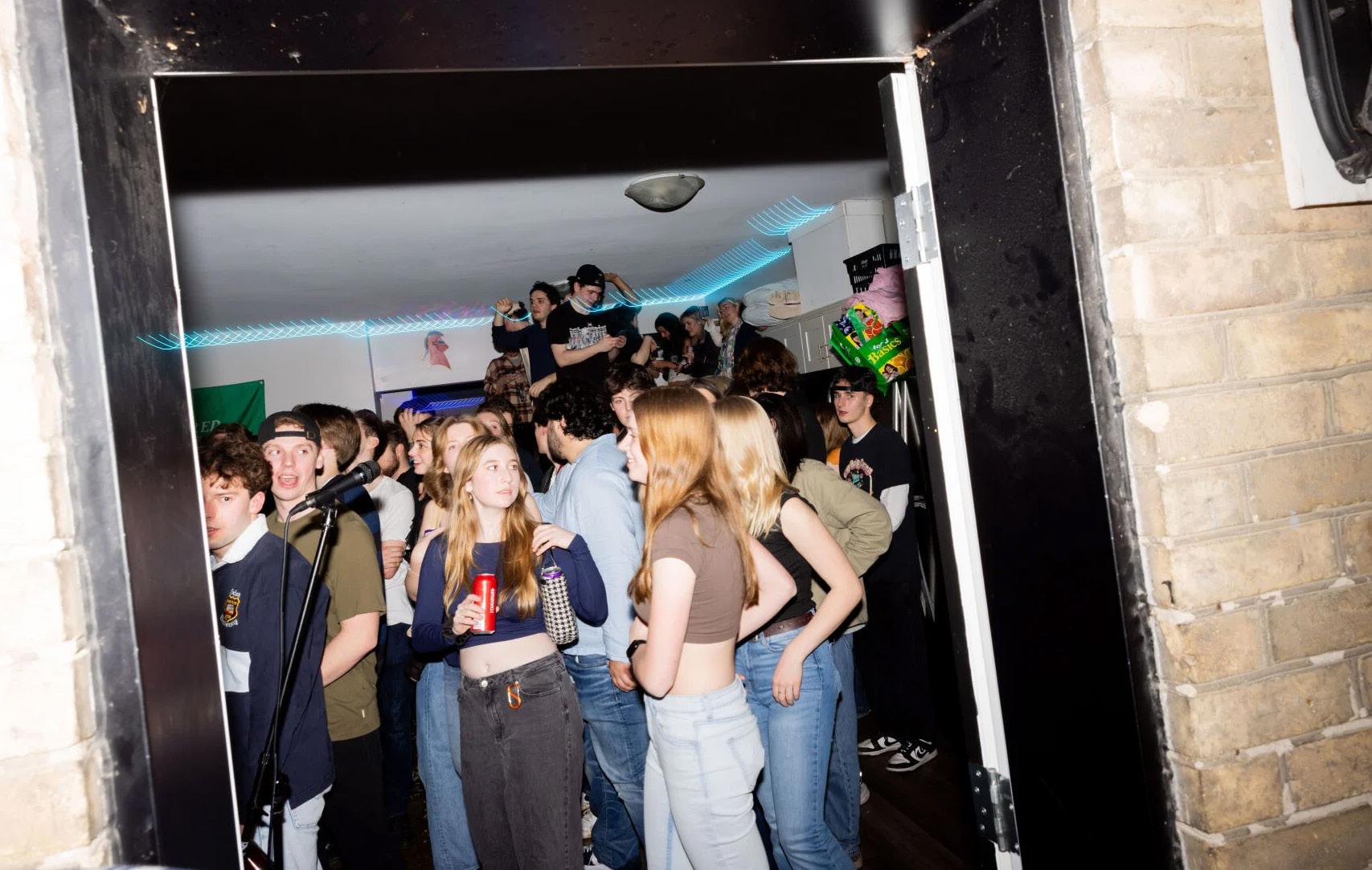
House
BEEF
HANNAH ALPER COORDINATING EDITOR
KAYLA FOISY STAFF REPORTER
Astressed or rebellious university student might not talk to their parents every day, but third-year management and organizational studies student Ella Nash reaches out to the family group chat daily. Even if it’s just to share the New York Times Wordle, it helps them stay connected. Who knew that guessing a five-letter word once a day could unite families, help users understand the world — and maybe even save journalism?
Jonathan Knight, the senior vice president of games at the New York Times, explains how Wordle fits into the Times’ business strategy, which is to be the “essential subscription for curious people seeking to engage with and understand the world.”
Knight sets the vision and strategy for the game that attracts millions of people every week.
“What’s cool about Wordle is that it’s the same solution every day for everyone. Because if it’s difficult on any given day, we all share in that difficulty,” says Knight.
Nash has noticed that the Wordle often seems easier when she’s had a productive day and more difficult when she’s been scrolling social media, not actively using her brain.
“I’ve noticed it is kind of harder to get the word, and that if I’m having a brain fog moment, I’ll do a couple of guesses, and then I just have to leave it and go back,” says Nash.
While the pattern might seem mindless, there’s also a method to the game’s difficulty.
“It’s important that the words be common words that we all understand. It’s no fun to not get
the word, and the word is some obscure, you know, chemical compound,” says Knight.
While games like Wordle, Connections and Spelling Bee exist in a separate Times Games app to keep separate from the news, Knight says the games still meet the Times’ standards for rigour and attention to detail.
“You’d be probably amazed at the amount of testing, editing and fact-checking that goes into just what the Wordle of the day is. So that’s all been kind of new for me, and fun to work with,” says Knight.
The Times is not new to games — it has been running the crossword since 1942, making Wordle a welcome addition.
Originally developed by Josh Wardle for his partner, the game blew up quickly and the Times wrote a story about it. This game was Wordle. Knight says they started talking to Wardle right away about acquiring the game and bringing it to the Times. They quickly reached a deal.
Since the audience was already hooked when the game was acquired in 2022, the Times was able to offer Wordle as a refreshing distraction from the hard news post-pandemic.
“It is very much a game that brings people together, regardless of what’s going on in the world,” says Knight. “Everybody can sort of share in the joy of Wordle. And there’s nothing about it that you know speaks to our politics or the things that might kind of divide us in the world.”
But behind every puzzle is a team.
Fourth-year mechanical engineering student Jeffrey Martinovic started doing crosswords with his mom at 10 years old. He was fascinated by how language could make words interlock up, down and across. Before long, he was constructing crosswords himself.
March 19 marked his 10th crossword published in the Times. His first came after 23 rejected submissions. His crosswords have also appeared in some Gazette papers.
“When you make puzzles, you want them to be solved by people, so you want them to be published somewhere. And the New York Times stands out as the apex of all papers that publish puzzles, it’s the gold standard, like every solver knows the Times,” says Martinovic.
Martinovic explains that the process of getting his work published is rewarding. He says it’s useful to see both positive and negative feedback on his puzzles to understand what’s connecting with audiences and how he can make a better product for the solvers he’s trying to reach.
“You want to give something for the people who find it way too easy, give them a bit of a challenge or something to pause and look at. And for the people who find it too hard, you want to give them life vests to help them through,” says Martinovic.
The games don’t just function to test people’s spelling skills, but also to broaden the Times’ audience and convert people to news readers. Knight is especially hopeful they can introduce the Times brand to a newer, younger audience.
“It’s a very valuable audience in terms of introducing them to everything that the Times has to offer, starting with the games, including the daily crossword, which is part of the games subscription, and then ultimately the news,” says Knight.
Knight sees the single, daily puzzles as “time well spent” rather than a doom-scrolling experience, nagging you to be in the app all day long.
“We don’t control the news cycle. It sort of ebbs and flows. But games, the puzzles, are there for you
every single day, and so it helps reinforce that daily habit with the Times,” says Knight.
Through his experience in creating crosswords, Martinovic proves that English and engineering can have ties. He says a major problem of the industry is engineers being unable to express themselves — but crosswords and games like Wordle are ways to communicate and think more about language.
“People who are brilliant, they’re ideators, they can design things, and they have technical skills, but not a lot can communicate effectively … so something like crosswords is such a great way to expand your vocabulary, think a little more linguistically,” says Martinovic.
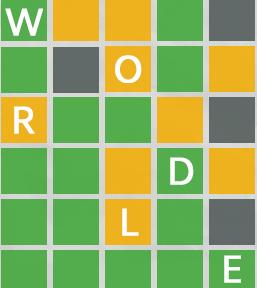
The 2024–25 school year was monumental. Before classes even began, Western University community members established a 60-day encampment in the summer on Concrete Beach, calling on the university to divest from military contractors and companies they said are complicit in the Israeli occupation of Palestinian territories. As students returned to campus, changes continued. The university proposed, then paused, a new procedure restricting demonstrations on campus, including a policy banning camping, due to community backlash.
Universities and colleges across the province were marked by financial strain, following a federal cap on international students and a tuition cap for domestic students. Western announced minimum course enrollment thresholds and a partnership to outsource recruiting and education for some first year international students to for-profit company Navitas.
Outside of campus, new political leaders — both federal and provincial — were elected. Yet, against a backdrop of change, students rose to meet the shifting times, hosting rallies, driving innovation, advocating for one another and celebrating the vibrant culture of Western’s community.
The Gazette’s Year in Photo, inspired by The New York Times, brings you the most powerful, poignant photos of the year and allows you to see the biggest stories on campus this year through the eyes of our photojournalists.

On May 8, 2024, the Western Divestment Coalition began an encampment on Concrete Beach, calling on the university to divest from military contractors and companies they said are complicit in the Israeli occupation of Palestinian territories.
Protestors dismantled the camp on July 6, 2024 after Western president Alan Shepard warned they must do so or face disciplinary action.

The Canadian Union of Public Employees Local 2361, representing 330 of Western’s caretakers, groundskeepers and tradespeople, went on a seven-week strike starting Aug. 30, 2024 until Oct. 17, 2024. The union picketed at entrances to the university and held demonstrations, including one during the opening of the Ronald D. Schmeichel Building for Entrepreneurship and Innovation — which opened in September after two years of construction.

Around 2,500 first-year students gathered on the Health Science field for Orientation Week opening ceremonies on Sept. 2, 2024 to celebrate the start of their university journey marked by speeches, cheers and live music.
Western men’s football dominated over the Carleton University Ravens with a 52-21 victory at the OWeek game, with sophs in attendance cheering.
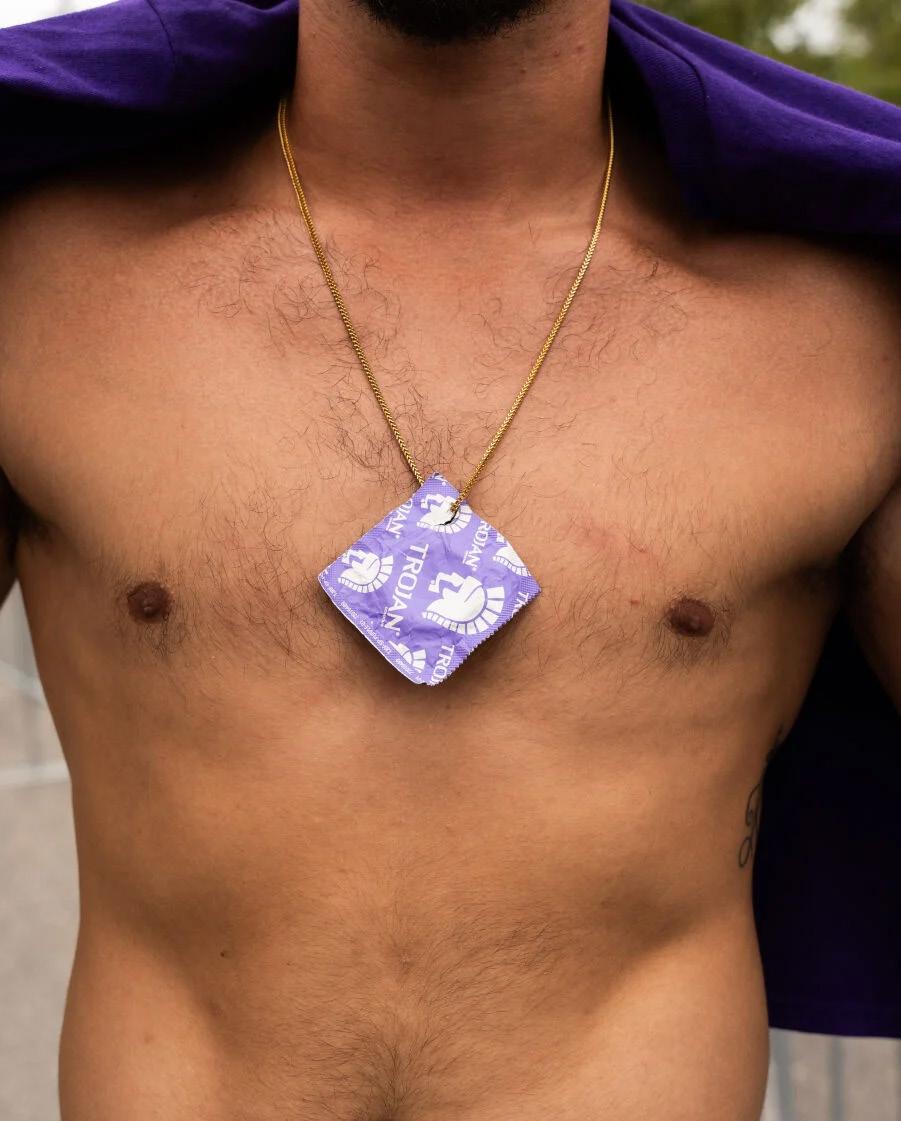
Western’s Homecoming saw thousands of purple-clad partiers flock to Broughdale Avenue and the surrounding streets amid a strong police presence. Police cleared Broughdale Avenue by 6:30 p.m. and partiers spilled onto Richmond Street where police responded to several incidents later that night, including an assault involving two individuals and a weapon.
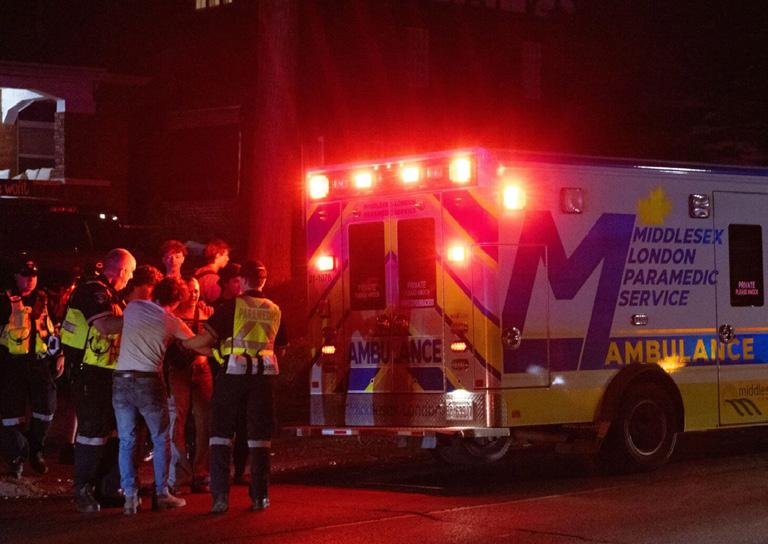
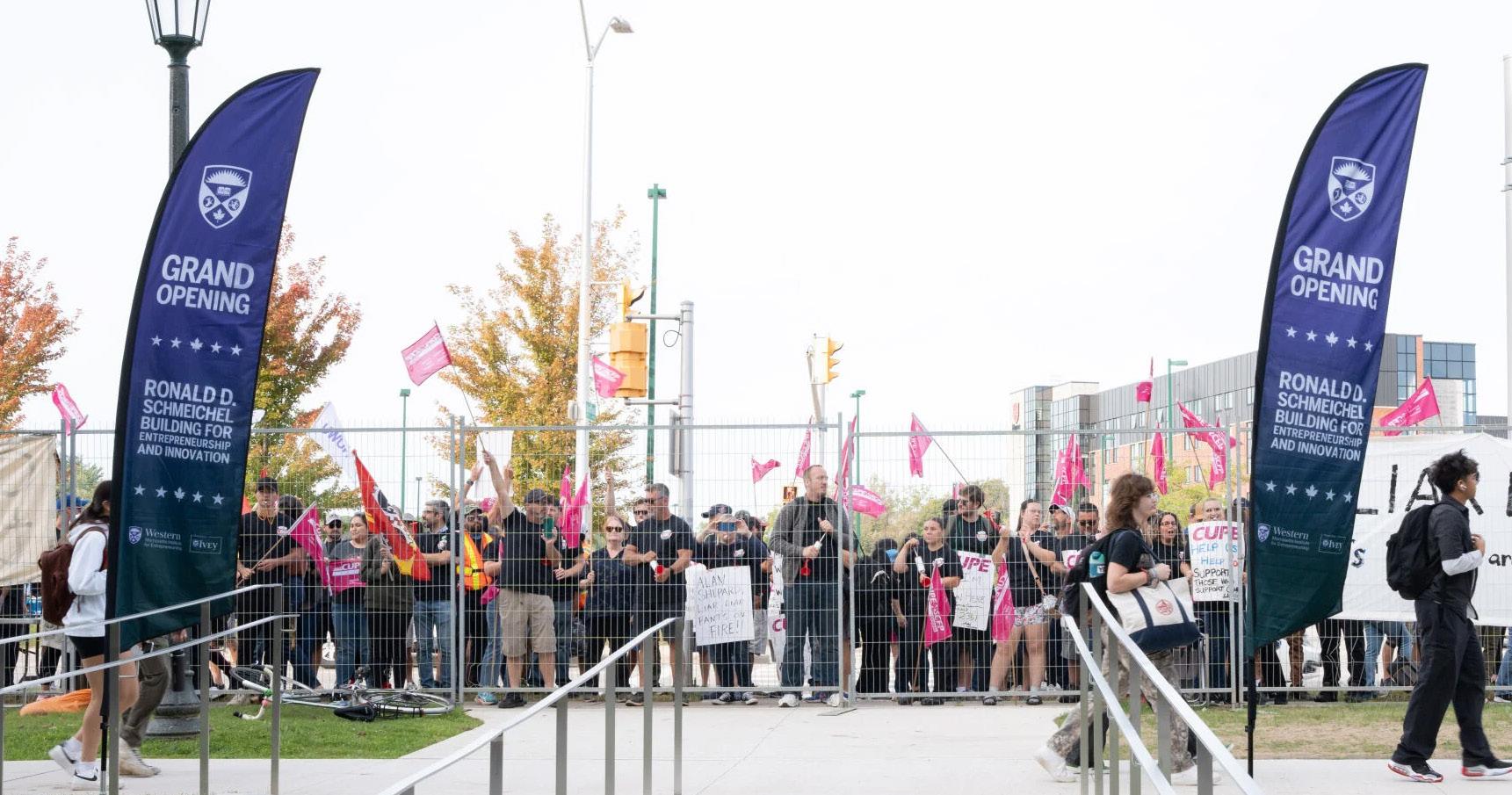
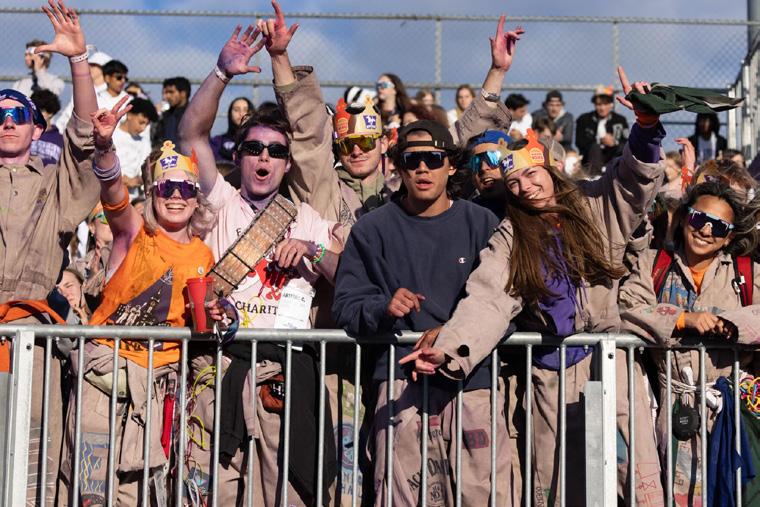
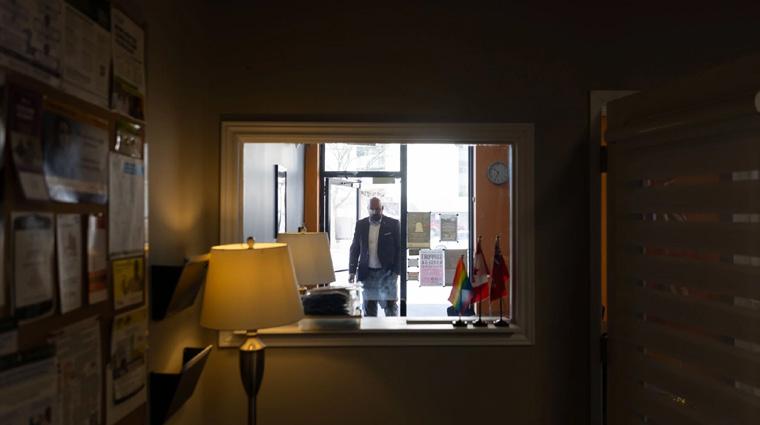
In a snap provincial election on Feb. 28, Member of Provincial Parliament Terence Kernaghan was reelected to represent London North Center. The Western alum hopes to improve the healthcare system housing crisis and affordability for students in his third term.
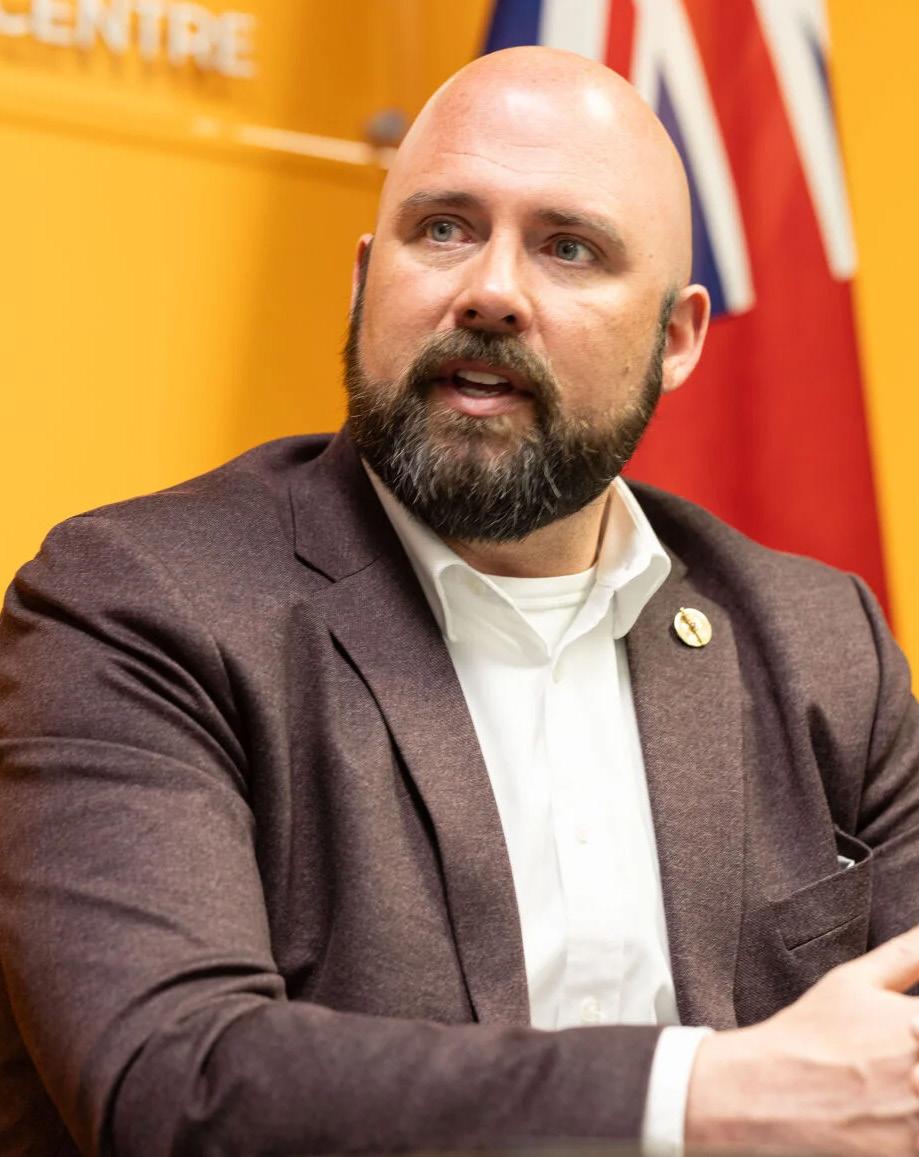
Federal New Democratic Party leader Jagmeet Singh spoke at a campaign stop in London, Ont. and met with around 100 constituents on March 26, following Prime Minister Mark Carney’s announcement of a snap federal election.
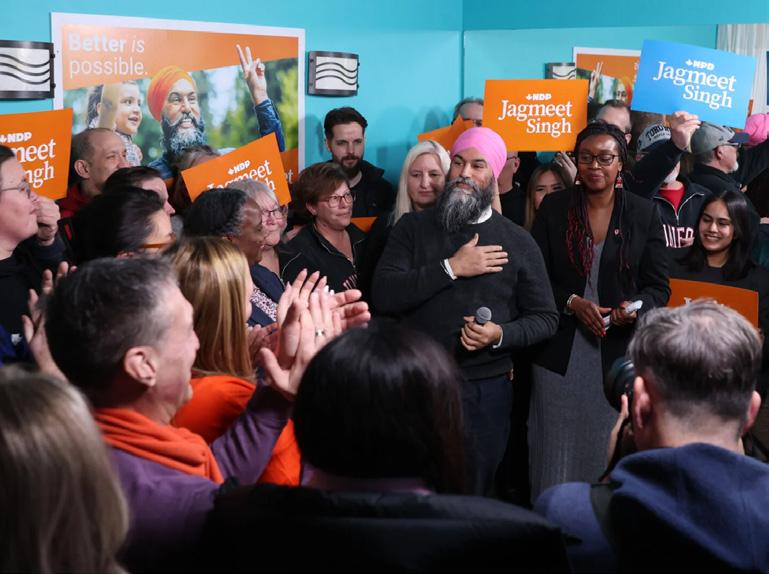

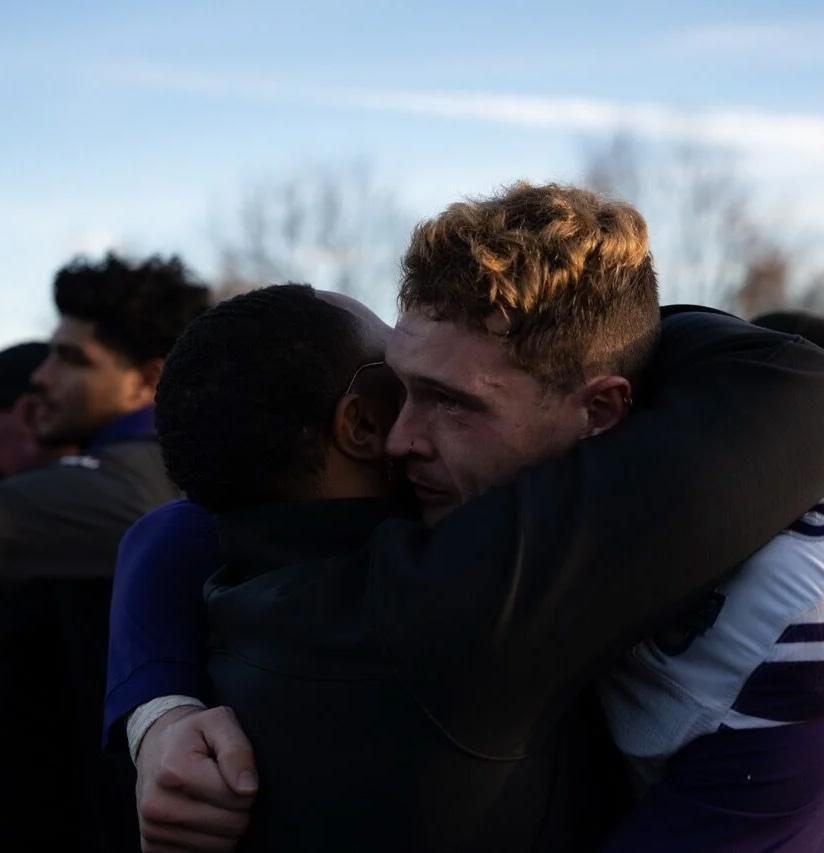
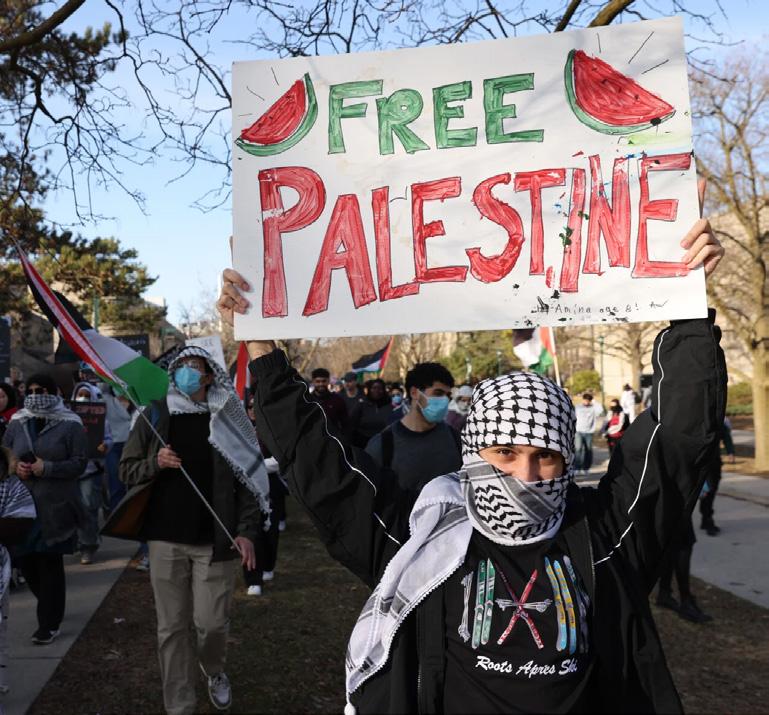
The Western Divestment Coalition organized multiple rallies throughout the school year, calling on the university to divest from companies they say are tied to Israeli military assets and the occupation of Palestinian territories. After the summer encampment, Western introduced a procedure requiring groups to seek permission to demonstrate on campus, and a policy banning camping. Both were met with severe backlash across campus and was later paused. The school is currently drafting a new MAPP 1.1 Policy and Procedure to be shared with the Senate and Board of Governors later this spring.


September 2024 marked the one-year anniversary of Western’s announcement that Brescia University College would integrate into its operations and no longer exist as a standalone institution. Former students of the women’s affiliate college transitioned into

The USC hosted a Western men’s varsity lacrosse game in honor of the National Day for Truth and Reconciliation and the National Day of Awareness for Missing and Murdered Indigenous Women. The game, hosted on Oct. 8, 2024 supported the Moose Hide Campaign, an Indigenous-led movement encouraging Canadians to stand against gender- based violence and domestic violence and featured traditional dances and a learn–to–play session.
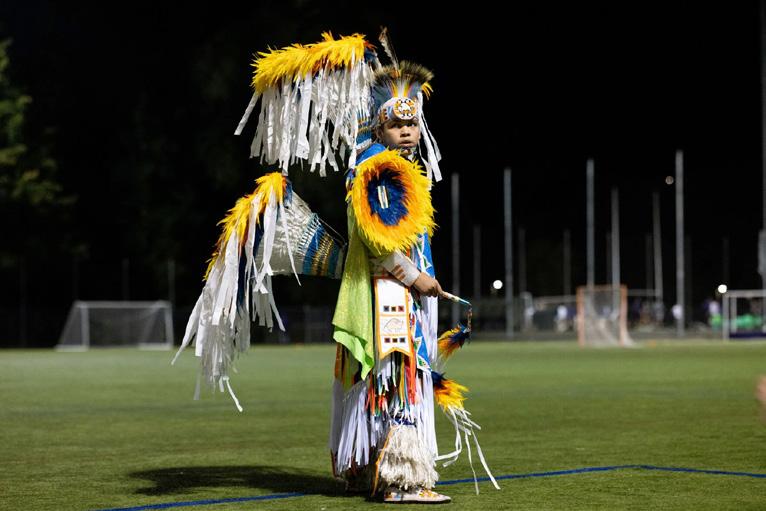
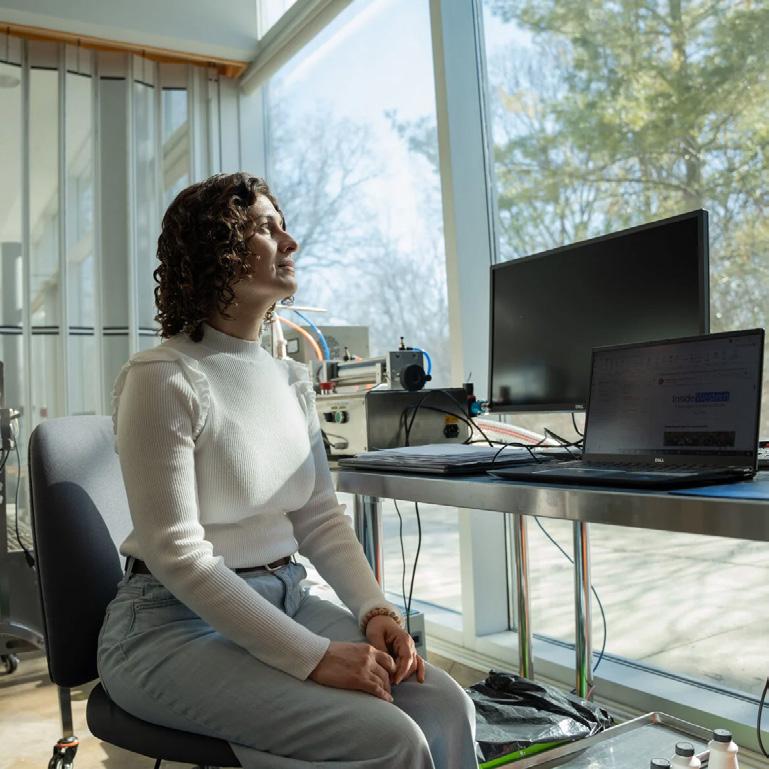

Western opened a new lab in January to research whether certain foods enhance brain function. Biology professor Raymond Thomas is leading the exploration into nootropic ingredients, like caffeine, that may have a measurable positive effect on the brain.
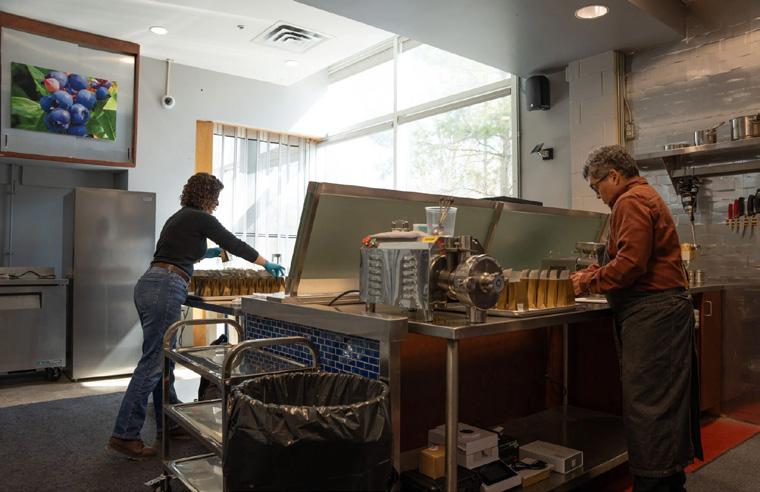

On Jan. 17, around 100 protestors called on Ivey Business School to end a study abroad partnership with Ben-Gurion University in Israel. Ivey later told the Gazette the trip, which allowed 18 Ivey students and six Israeli students to travel for three weeks in Canada and Israel, had not occurred since 2023.

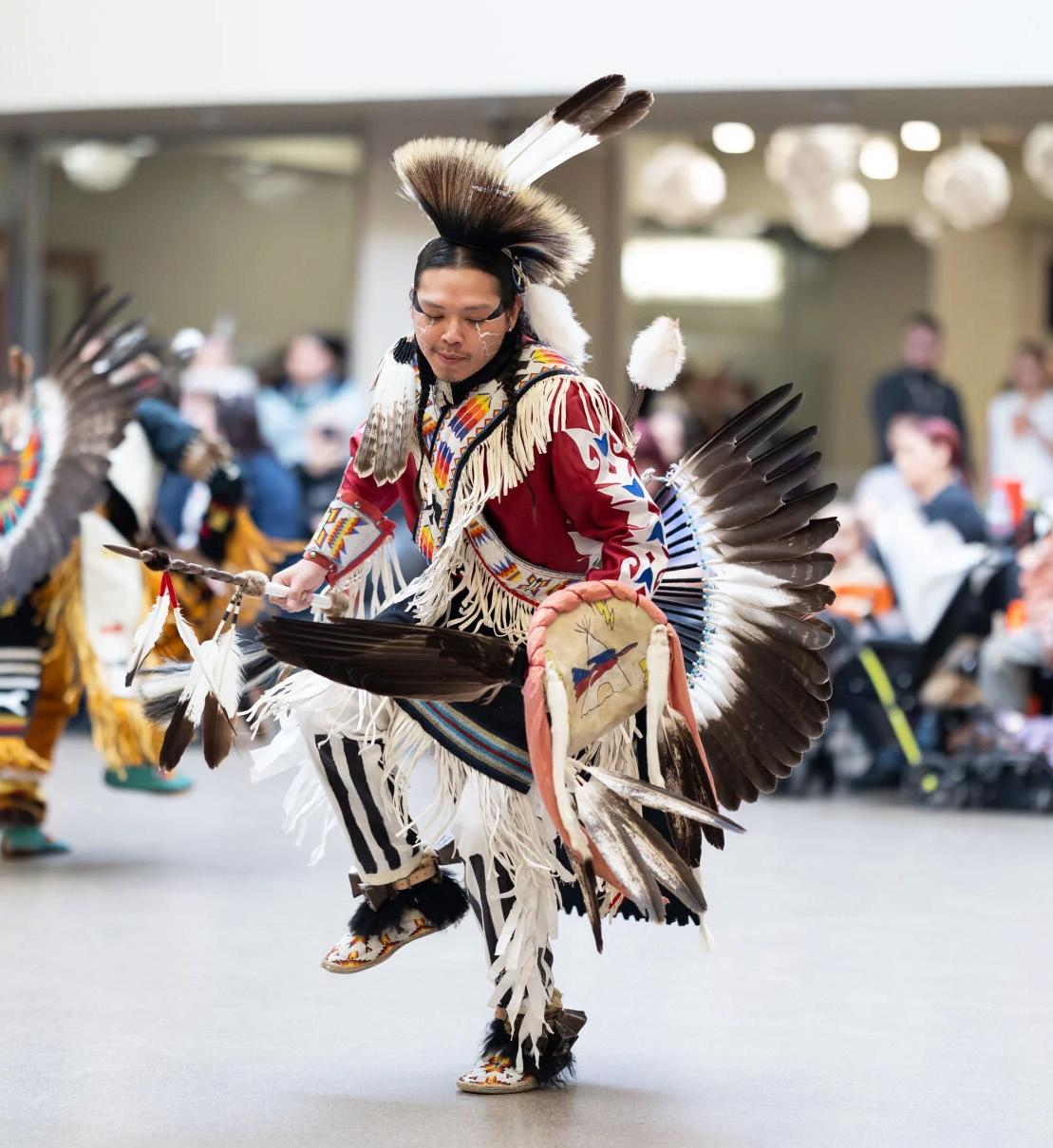
The London Fire Department visited Western twice in one week in March — once for a suspected gas leak on March 11 that forced students to leave some buildings, later revealed to be a rotten egg smell from a decommissioned chemistry lab. The second visit was related to an overheated HVAC system in the Support Services building on March 13, leading to a full-day campus-wide Wi-Fi outage.
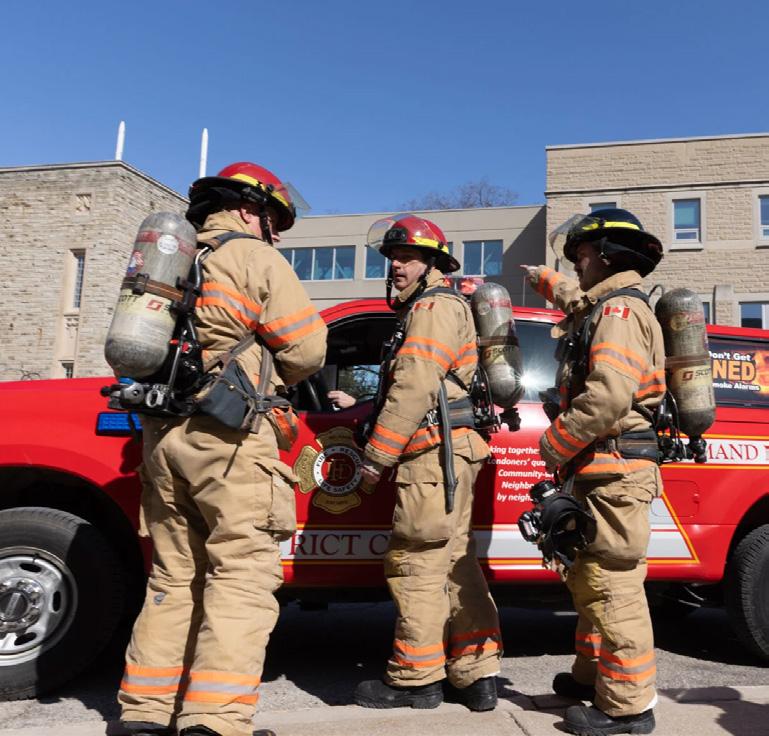
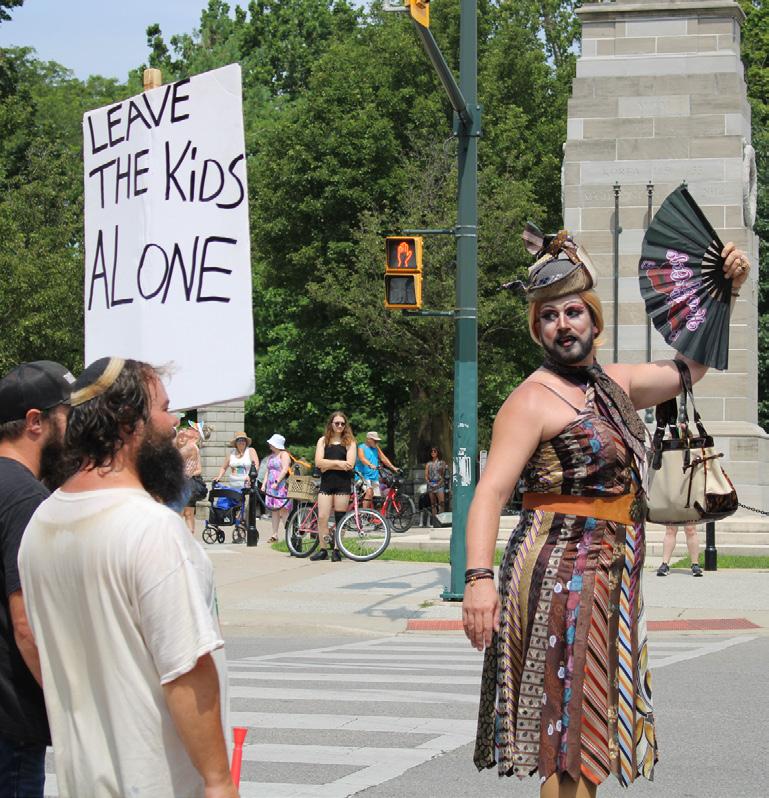
Thousands attended London’s annual Pride Parade on July 21, 2024. Despite some protests, superheroes, drag queens and Western community members gathered for a rainbow-filled afternoon celebrating the LGBTQ2S+ community.
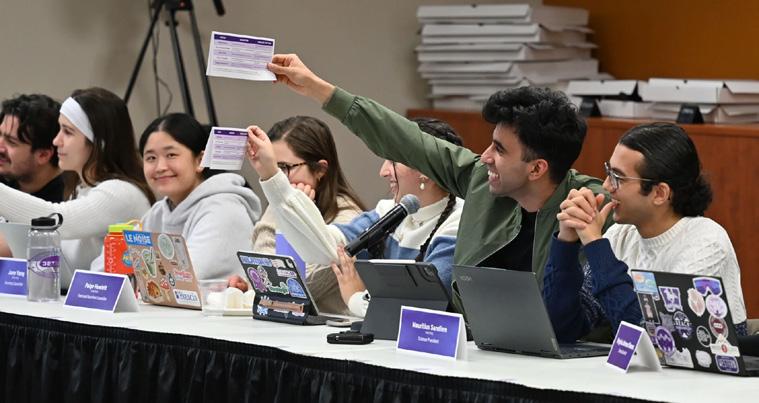
On Dec. 4, 2024, the USC unanimously passed a motion requiring the student union to advocate for Western to incorporate human rights considerations into its investment policy. The Society of Graduate Students followed suit and passed a similar motion in January.
WRITTEN BY SOPHIA SCHIEFLER, OM SHANBHAG, GABRIELLA MCKENNA, CHIRAG K SINGHAL, MABEL ZHAO, FINN TOPOROWSKI
The Indigenous Students’ Association hosted its 19th annual powwow on March 20. Around 200 community members gathered in the Mustang Lounge for a day of celebrating Indigenous art and culture through dances — spot dances, a potato dance and a round dance among others, songs and storytelling.


On Feb. 6, Kat Henricus won the 2025 USC presidential election with 5,448 votes in the fourth round of ranked ballots. Henricus beat out six other candidates, with 29.4 per cent of students voting — up 7.8 per cent from the year before.



Police cleared the street and neighboring ones in the Old North neighborhood around 4 p.m. and issued 30 charges on the weekend with no major incidents.

The Super Bowl, the anniversary of cannabis legalization, film reviews — whatever topic our masthead is writing about, the graphics team is ready with their pens and brushes to illustrate it. Each graphic has its own creative process. Sometimes inspiration strikes at 1 a.m., sometimes in-depth research is needed to accurately portray the topic. Follow our graphics team as they paint a picture of the creativity, effort and time it takes to make a 4x6-inch graphic.
Angwara Nilanont
When I took on this graphic, I had no idea who Kendrick Lamar was. I decided to listen, watch and read anything I could about his music. While the Super Bowl Halftime show was the focal point, the graphic needed to reflect Lamar’s weight as a defining artist of our time. At 1 a.m. — as all great creative breakthroughs happen — it clicked. Inspired by his music video “HUMBLE,” I added perspective blur as glowing wisps of light to mirror the raw intensity of his music. Not bad for someone who thought he played in the NFL.
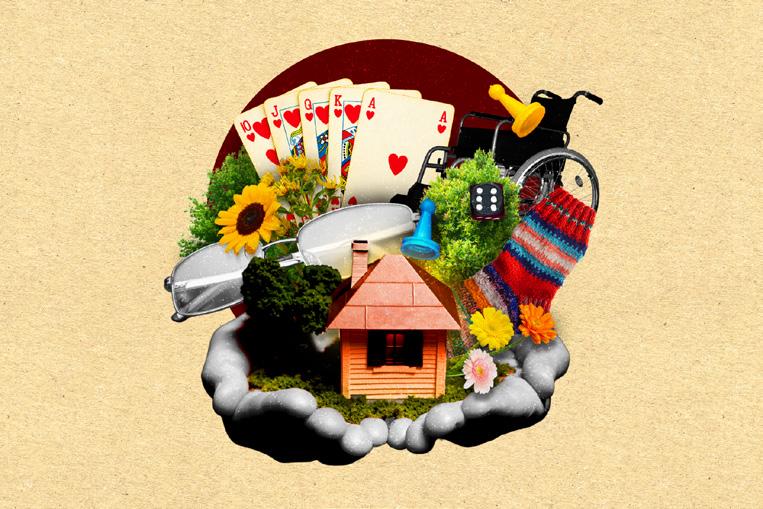
Opinion: Aging in place should be the norm
Angwara
Nilanont
Designing a graphic for a concept — rather than a person, event or object — can be a creative maze, and this one was no exception. This graphic was created for the opinion piece I wrote to illustrate the beauty and vibrancy of aging at home. I focused on three themes: growth, community and time. Growth reflects how aging deepens our appreciation for life’s small joys — like London’s abundant trees and flowers. Community? Nothing says bonding like a friendly board game rivalry. And time is hinted at through eyeglasses and a wheelchair, faded in black-and-white and tucked beneath brighter memories.
Six years of cannabis legalization: What we’ve learned
Tiffany Cheng
While the topic was cannabis, I avoided anything too on-the-nose for the main subject and looked towards Art Nouveau. Since the movement features a lot of flow and action, I wanted to blend the art style with visual elements of cannabis, such as clouds of smoke and the plant itself. The goal was to create an image that complemented the article but still stood on its own to draw readers in. I went through multiple iterations and rough drafts before settling on the final piece. After illustrating, I added layer effects to achieve the same funky colour scheme often associated with marijuana art.


Isabel Marquez
The graphic was inspired by the article’s focus on the UEFA Champions League tournament, using the trophy, logo and blue to reflect its branding and competitive spirit. While I’m not a sports fan myself, I wanted to convey energy and movement, which led me to explore graffiti art. I was specifically drawn by the bright, neon colors and the imperfect placement of paint textures, which matched the dynamic and raw emotion of a sports competition. My goal was to create a bold, eye-catching graphic that captured the article’s sense of anticipation and excitement.
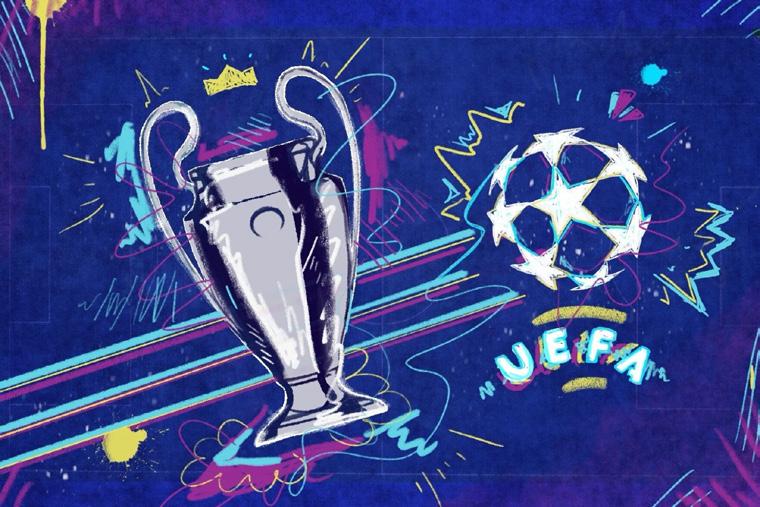
Josh McKee
This graphic highlights one of the world’s most entertaining sporting events, the Super Bowl. The two best teams in the NFL — the Kansas City Chiefs and the Philadelphia Eagles — fought it out on an eventful Sunday in New Orleans. I wanted to showcase the superstars from both teams and I thought that detailed drawings would really elevate the graphic. Compositionally, the graphic is balanced to allow viewers to interpret the matchup evenly, just as the game was expected to be.
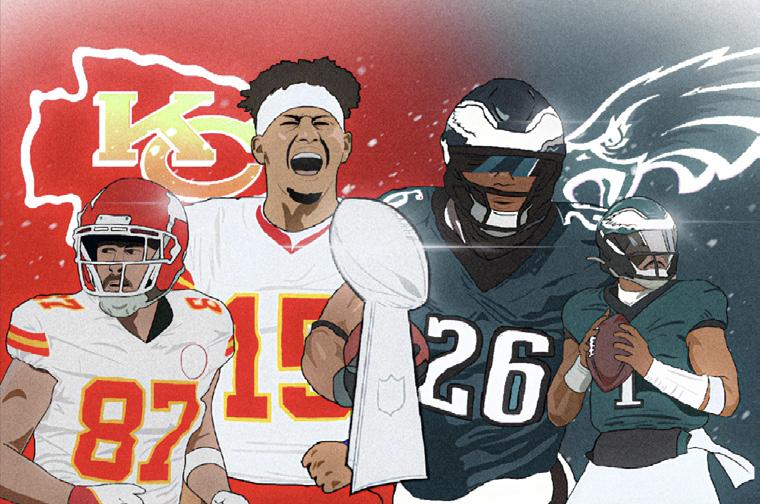
I love movies, and I think Letterboxd is a great way to keep track of the movies you’ve seen. This graphic was made to showcase the number of films available to review on Letterboxd. When I think of Letterboxd, I think of the overwhelming feeling of having massive watchlist. That anticipation inspired the people inside the logo, positioned as if watching a film, with a variety of movie posters in the background.

I wanted to create a visual that implicitly conveyed the plot and themes of Anora. From this, I had the idea of placing all the important details inside a ring box because (spoiler alert) Anora’s life revolved around her marriage to Ivan. Behind the ring box is a red scarf, which Anora wears during significant moments in the film.


Rather than focusing on a single subject, I wanted to immerse the viewer in the event — to capture the atmosphere and make it feel like more than just a sports event, but a long-standing Western University tradition. I primarily focused on the use of vibrant colours and warm lighting to convey the energy of the gathering. I also emphasized the article’s playful, clever title through rough, textured brush strokes.

Cameron Buyze
For this graphic, I was inspired by what I imagine when thinking of static noise. I chose a black and white colour scheme to encapsulate “white noise.” I felt these colours highlighted static and embodied the article’s theme. Along with black and white, I included pops of red to highlight its effect on grades and school in general. For the visuals themselves, I included a variety of musical elements, such as vinyl and classical music sheets, to reflect the article’s focus on music and its effects on studying and performance.


Mustang mixology Angwara Nilanont and Arisia Qarri
With free rein to design graphics for this listicle, we did what any graphic editor would do — we spiralled into a Pinterest rabbit hole for inspiration.
As a collaborative piece, we combined our strengths in illustration and Photoshop, merging sketch-style illustrations with surrealist collages. Part of our goal was to stay true to the names of

VERONICA MIRANDA STAFF PHOTOGRAPHER

The Weldon Library is packed with students dreading finals season. But what if I told you I love finals? The sense of accomplishment of completing long study days and writing finals genuinely brings me joy.
Although it might not be most people’s ideal morning, there’s no better feeling than getting to the D.B. Weldon Library every day right when it opens and making it a personality trait. For me, an accomplished morning of working hard sets the tone for a productive day.
Students often fear finals season, but with the right mindset, it can be a time of productivity and achievement. By embracing the routine and energy that comes with this stressful time, final exams can bring an overwhelming sense of accomplishment.
The productivity that comes from studying makes me feel good, maybe even great — this is because productivity releases dopamine. Our brain’s dopamine neurons treat information as a reward, releasing dopamine every time we absorb new information — something we do a lot of during finals season. A successful study session can give you that rewarding hit of dopamine and a real sense
of achievement. And finals? That’s a whole lot of studying, and a whole lot of dopamine.
I find myself most productive when I teach myself out loud using active recall or a whiteboard — a tool you’ll find in almost every bookable library room at the Allyn and Betty Taylor Library. It’s not just personal preference. Studies show that handwriting notes requires active engagement with information, leading to better retention and understanding.
Extended hours at Weldon and Taylor, plus the fact that there are no classes or other assignments during finals season, compared to midterms, creates the perfect conditions for productivity.
The energy on campus — surrounded by other stressed students lining up for The Spoke and Rim Tavern or hustling to find a big table — is enjoyable. Just trust me. I have a whole schedule.
I get to Weldon at 8 a.m., my friend joins me at 11:30 a.m., we stay until 6 p.m., go home, and come back for a night study session from 9 p.m. to midnight. We rinse and repeat until five successful finals are written. A beautifully crafted routine, if I do say so myself.
The science beyond body doubling also helps explain why I love being surrounded by a stressed crowd. Body doubling is when simply having someone nearby helps you focus — something that happens naturally in Weldon, Taylor, Talbot College or any of your favourite study spots when you are around other people who are being productive.
There’s something about the energy on campus that brings people together during finals. We’re all stressed, but it gets a little easier when you know you’re all in the same boat. I genuinely thrive off it. When everyone on the fourth floor is as stressed as I am, it weirdly makes me less stressed.

I get that finals suck, and I’m not saying I’ve never been upset — especially when you have three in the same week or if the scheduling delays going home. But to be honest, moping about it doesn’t change anything — so sometimes, the only thing you can change is how you approach it.
When you are done with a final, it feels amazing. You get to walk away and think, “I did that.” Not every final goes perfectly, but you did it and it’s done.
As an out-of-province student, finals season also means I get to go home. While being done with midterms can feel like a relief, it’s just a reminder of the remaining assignments, readings and class-
CLAIRE WEEKS CULTURE INTERN
It’s nearing midnight on Wine Wednesday. He’s charming, confident, charismatic … but then, like a jolt from a pleasant dream, he drops the bomb: “What’s your snap?”
With those three words, your hopeless romanticism is once again forced to surrender to reality. In the digital age, you may not be spoiled with handwritten letters and roses — but you will find yourself on the receiving end of Chad’s “u up” texts, accompanied by the picturesque backdrop of his Star Wars bed sheets.
Snapchat sucks. It quantifies so many qualitative aspects of our lives, promotes narcissism, fosters half-meaningful relationships and is just plain juvenile.
Remember The Notebook? Noah wrote Allie 365 letters and built her the house of her dreams — while she was engaged to someone else. And, while you and Chad may very well have a snap streak of a whole 30 days, let’s be honest — you know it’s to keep the door open for those 2 a.m. “linking” inquiries.
Like many of you, Snapchat had been my primary means of communication since Grade 6, back when the dog filter seemed like the pinnacle of technological innovation. Yet, out of habit, most 20-somethings I know still use this filter-centric app as their main means of communicating. By design, Snapchat fosters intangible relationships, keeping people close enough to recognize but too distant to truly know.
Halfway friendships are just not for me. Snapping a frosh week “friend” with enough frequency you could expect to find they’ve commented on your photo dump, but never engaging in meaningful conversation — unless we’re talking about a Corona-fuelled Delilah’s run-in.
Some things were never meant to be ranked and ordered. Try explaining to a Victorian child that teenagers in the 21st century voluntarily check a daily, ev-
er-changing leaderboard of their eight closest friends.
By comparison, our parents had it easy. Best friends were best friends because of shared experiences, not how much an algorithm estimates you talk to someone. In the event of an argument, they wouldn’t have to speculate on why a heart disappeared overnight or what it meant when a new name pushed theirs down the list.
Yet for those of us who grew up on Snapchat, these indicators aren’t just symbols — they’re catalysts for insecurity, overthinking and often, the beginning of the end of relationships.
I prefer the binary world of iMessage texting. If they didn’t text you back, well … it’s because they
didn’t want to. I think there is something valuable in that duality: yes or no, never in between.
And for an app that rose to popularity thanks to funny filters, the joke has long exhausted itself. It’s time to hit the delete button.
“Snapchat Dysmorphia Syndrome” is a psychosocial condition that is characterized by a feeling of dissatisfaction with minor “flaws” and the desire to transform into the augmented, filter-perfect self. This phenomenon has driven many teenagers to seek plastic surgery, with cosmetic surgeons reporting a growing number of clients asking to replicate the appearance created by Snapchat filters.
This calls to mind a recent TikTok trend: audio
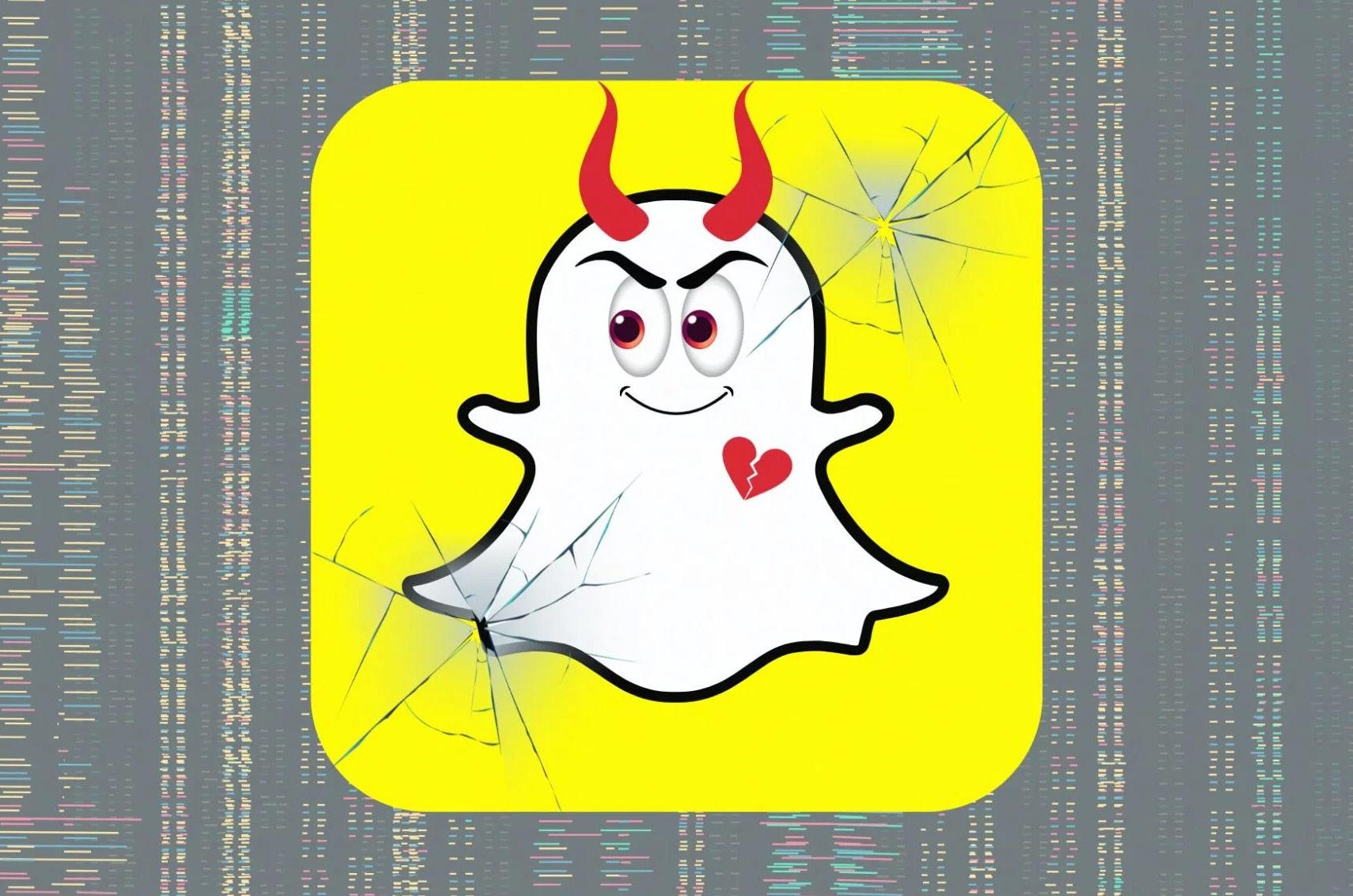
es I must catch up on.
I don’t think I’ve ever had a reading week free from school stress — I know I’m not alone in that. There is still a daunting half-semester restricting me from being able to relax and spend time with family and friends at home.
My enjoyment of finals makes it much less intimidating. Honestly, nothing compares to the relief of walking out of that last exam.
We hate finals because we think we’re supposed to, but a simple change of mindset really does change everything.
of overlapping get-ready-with-me videos instructing viewers on how to “glow up” and be the “hot friend,” while on-screen text reads, “You were never meant to see your own face.”
It’s a disturbing realization. We were never meant to obsess over our appearance, much less be aware of it — yet apps like Snapchat force us into constant self-surveillance. The average Snapchat user opens the app 30 times a day, each time greeted by their own face.
It’ll come as a shock to some, and a relief to others — you don’t look like that.
Over time, many of us have come to perceive that image as an accurate depiction of our appearance. But the short distance between the camera and your face causes significant distortion, subtly warping your own perception of what you look like.
In all fairness, Snapchat does offer some unique features that can ultimately save you plenty of time. Immediately upon adding someone back, their profile provides what I like to call a pre-screening of red flags: Snapscore — if it’s over one million? Run. Astrological signs — fire and water? Incompatible!
So, if you’ve got something against Scorpios, for example, this feature could spare you the emotional turmoil of an hour-long lecture about how we’re living in a simulation.
But here’s the problem: these same features also provide plenty of irrational reasons to dismiss people before actually getting to know them. Instead of meeting people the way it used to be — the way it’s supposed to be — we allow Snap scores, Bitmojis and zodiac signs to shape our first impressions. Snapchat sells itself as a tool for connection. But in reality, it gamifies relationships, quantifies social status and fuels overanalysis — all under the guise of a harmless messaging app.
Some things — like friendships, conversations and memories — are meant to last longer than 24 hours. We’re all in pursuit of self-improvement. Maybe ghosting Snapchat is the place to start.


ALEX ZARENDA SPORTS EDITOR
When you cross the stripped-down frame of a go-kart with the off-road ability of a Jeep, you get the coolest motorsport on Western’s campus: Baja racing.
With over 140 members, Western Baja Racing is a mechanical engineering-based team that designs and builds a new off-road race car every year to compete in a series of competitions and races.
“I’ve always loved cars. I want to work with cars in the future when I graduate. So I came to a meeting, and immediately it was the most friendly welcoming club ever,” says Allie Banman, a second-year mechanical engineering student who leads the Baja racing media team and works on the car’s frame and body.
Western Baja Racing competes in two main competitions: Épreuve du Nord, which takes place in Quebec, and the Baja Society of Automotive Engineers International tournament, which takes place in the United States. The team currently ranks third overall in all of Canada.
The competitions consist of different challenges, such as suspension and traction races which navigate through bumpy hills and bridges, the Nordic combine through snowy trails and a grueling four-hour long endurance race.
Western’s Baja Racing ranks third overall in Canada, and first in Ontario. But what gives them the competitive edge?
“We are one of the few cars that actually have reverse function,” says Banman. “When we get stuck, which all these cars do because we race in about 10 feet of snow or huge three-foot sand dunes, we’re able to actually reverse it and keep time on the track.”
To level the playing field between schools with varying budgets, Baja cars are limited to seven horsepower and capped at 55 kilometres per hour.
“So instead of focusing on making the most amount of power, it’s how efficiently can we transfer that power,” says Ahmad Saab, a second-year mechatronics and AI engineering student and drivetrain lead for Western Baja.
The Baja cars compensate for their lack of speed by being able to traverse nearly any terrain, including mud, hills and snow.
The club is divided into several subsystem teams that help design different components of the car, including front suspension and tension, rear suspension, frame and body, drive train, manufacturing, driver systems and electronics.
The most involved members of the club get a chance to drive the car, and the most comfortable drivers get chosen for competitions.
Each subsystem ensures the car functions as a cohesive unit, even allowing for data analytics through the driver systems team.
“We mount all the sensors onto the car and route all the wires and whatnot, have them go to an online database and have all of the data from the car get to the people who need it,” says Jaxon
What I learned
MIKAILA KIMBALL OPINIONS EDITOR
Iknew three things about racing before I embarked on my movie-based education: it’s dangerous, the cars are fast and the corners are tricky.
If one thing is certain, my movie marathon has convinced me to tune in to a race. If you know me, you know I am definitely not a sports girl.
“If you ain’t first, you’re last,” is Ricky Bobby’s mantra in Talladega Nights: The Ballad of Ricky Bobby. While a comedy, this mantra could’ve been pulled from any of the movies I watched, from Disney’s animated hit Cars to the 2010 documentary Senna. The sport is cutthroat, and the drive to be the best fuels every racer. With this mindset comes sacrifice. Often, success comes at the expense of health, relationships and friendships. Cars crash, and so do marriages.
In Rush — my personal favourite of everything I watched — Niki Lauda crashed his Ferrari on the second lap of the 1976 German Grand Prix. Stuck in an inferno, other drivers raced to his rescue and pulled him from the wreckage. He sustained extensive burns, losing his eyelids, half an ear and large portions of his scalp. A priest was called to the hospital to administer the last rites. Six weeks later, he raced in the Italian Grand Prix.
I knew racing was dangerous — I mean, it’s a bunch of guys driving upwards of 300 kilometres per hour in cars made to be as light and fast as possible. But I wasn’t fully aware of how dangerous it is.
Senna chronicles the life of Brazilian driver Ayrton Senna, a three-time Formula 1 champion. Despite his prowess and accomplishments on the track, Senna died in a car crash at just 34 years old. Racing is life or death, and drivers are taking a gamble every time they start the ignition — even the best aren’t safe.

Will, a fourth-year mechanical and AI engineering student and driver systems team lead.
On the business side, a social media and sponsorship team contacts companies for financial and material support. Although the club is only promoted to and made up of engineering students, anyone regardless of program could technically join.
Each car costs around $45,000 to build. While Western’s Undergraduate Engineering Society funds the club, Banman says they rely heavily on more than 25 business partners to make the project possible.
Last year’s car is kept in storage to be learned from, but still gets used in races at Épreuve du Nord.
Western Baja shares a workshop with Western Formula Racing. The main difference between these two clubs is that the Baja focuses on offroad endurance, testing the durability and versatility across multiple terrains while WFR races a single-seater open-wheel car that focuses on high-speed circuit racing.
The clubs work closely together, and Banman says that WFR helped make the carbon fiber layers for the Baja car’s seat.
Aside from the engine, most parts of the car are built right at Western University, with students designing, building and assembling components in-house.
“They actually worked on welding this thing themselves. So we can say, aside from the pipes, which we do get made for us, we completely made this thing by ourselves. Yeah, it’s just really cool,” says Banman.

Rush centres on the infamous F1 rivalry between Lauda and James Hunt, and Senna makes reference to the rivalry between Senna and Alain Prost.
The rivalry in Ford v Ferrari is in the name — a competition not just between drivers, but an American car company engineer trying to usurp Italian legends in the 24 Hours of Le Mans in 1966.
The most intense rivalry of them all? Chick Hicks versus Lightning McQueen in Cars.
I can easily see how such a large fan base has formed around the sport. Watching Ford v Ferrari made me realize this isn’t just a race between drivers but also between the engineers behind the scenes. That is, for lack of better words, sick as hell.
I’m a sucker for drama, and a quick post-movie Google search of “F1 rivalries” produced many Wikipedia rabbit-hole worthy results.
A good rivalry makes everything more interesting, and I’ll be sure to keep my eyes on Lewis Hamilton and Max Verstappen when I cue up a race.
Despite being a sport reliant on machinery, it feels deeply human. With every corner and near crash, I’d hold my breath — and these weren’t even the real thing.
While peering at the current F1 roster, I noticed something these movies didn’t touch on enough. The drivers? Drop. Dead. Gorgeous. Combined with the undeniably attractive act of being a race car driver, many of these men are completely swoon-worthy.
Don’t judge too harshly if you catch me scrolling edits of Carlos Sainz Jr. to “Smooth Operator” as I await the next race.
Who knows? I might be a sports fan in the making.
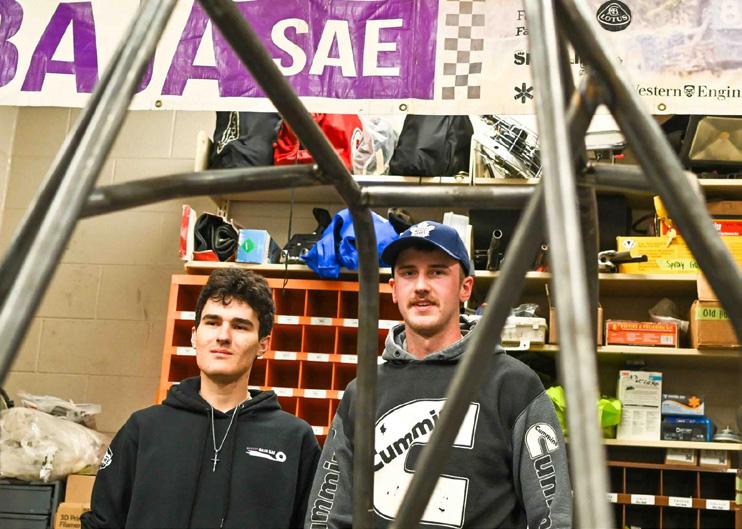

Who takes the win in F1:
MANAN JOSHI SENIOR SPORTS EDITOR
The age-old question in motorsport: who contributes more to a win — the car or the driver?
The discourse reached a peak in the 2014 to 2020 seasons, when Mercedes’ Lewis Hamilton dominated the Formula 1 world, winning six championships in seven years and breaking records for wins, pole positions and podium finishes.
Hamilton would finish races 20 seconds ahead of his competition, with the rest of the pack fighting for third place behind the two Mercedes drivers.
Many people have taken this opportunity to crown Hamilton the greatest of all time in F1 for his sustained dominance and tying Michael Schumacher’s record of seven drivers’ championships.
Others don’t quite see it that way.
In 2014, the hybrid era began in F1 — coinciding with Hamilton’s rise. The Mercedes power unit implemented a groundbreaking split turbocharger design that essentially made the car a rocket ship.
The car had a leg up on its competitors, so much so that in 2014, when the engine qualified first at every race, team director Paddy Lowe admitted they never used full power in qualifying.
With such a dominant vehicle, fans and competitor drivers find it hard to credit Hamilton for his wins. In 2020, McLaren driver Lando Norris said, “He is in a car which should win every race, basically. He has to beat one or two other drivers, that’s it.”
So if the car is so good, is there any value in the driver?
Charles Yuan, a third-year medical sciences student and vice-president of marketing for the Western Formula 1 club, believes the car does all the heavy lifting.
“Pretty much the top 10 drivers in F1 are all pretty much the same skill, but it depends on which car they get,” says Yuan.
But third-year data science student Arhaan Maknojia doesn’t agree with that sentiment, claiming that individual drivers make the difference.
“If you look at Red Bull, you can see [Liam] Lawson far behind, like at 18th, and you see Max Verstappen second. So the drivers matter a lot,” says Maknojia.
Maknojia is referring to the driver pairing of Max Verstappen and Liam Lawson at Red Bull Racing. Verstappen vastly outperformed his
teammate, leading to Lawson’s removal from the team after two races.
Lawson was hired after Sergio Pérez was removed from Red Bull following his underwhelming performances in the last two seasons, during which he was also massively outperformed by Verstappen. Maknojia also references times when drivers with far inferior cars have impacted the race due to their ability to navigate harsh conditions and difficult tracks.
He highlights the 2021 Belgian Grand Prix at Spa-Francorchamps where George Russell qualified on the front row in a Williams F1 car.
“He was squeezed between Hamilton and Verstappen. That’s the two fastest cars, and he was there in the Williams, which was the slowest car at that time, so yeah, the driver can make a lot of difference.”
For Jess Moerman, a second-year health sciences student and social media graphic design executive for the Western Formula 1 club, it’s all about the mentality.
“The car can only get you so far, but after a certain point, it’s all about your own mentality and how much you really want to win it,” says Moerman. Moerman used last year’s championship battle between Red Bull’s Verstappen and McLaren’s Norris as an example of a driver pushing beyond the equipment.
“Last year, Max probably had one of the shittiest cars … but he still managed to win the Drivers Championship with it,” says Moerman.
Verstappen drove a Red Bull, considered to be one of the most unpredictable cars on the grid at the time, and Moerman’s point reflects how Verstappen adapted and maximized the car’s potential.
Perhaps it’s not as simple as car versus driver. Maybe it’s all about how well a driver can adapt to a car and create a connection with it.
“It’s really important that the car matches the driver’s driving style. Red Bull is a good example where that car is entirely built around Max to the point where any other driver gets put in that seat and they look terrible,” says Moerman.
She thinks the key is finding a way to manage both drivers’ driving styles and design a car that is functional for them and still competitive.
Drivers can be the difference makers, but they have to have a car that suits their style and a team that supports them.


S quealing tires. Burning rubber. Hitting the apex of a corner at hundreds of kilometres per hour, all while going wheel to wheel with opponents. This is Formula 1.
Formula 1 is the world’s most prestigious international single–seat, open–cockpit motorsport. Its origins trace back to the early 20th century, when the French term “grand prix” — meaning “big prize,” — was first used at the 1906 French Grand Prix at the iconic racing location of Le Mans.
The sport later evolved after the Second World War with the Formula One World Championship officially launching in 1950 at Silverstone Circuit.
Traversing time zones and seasons, Formula 1 reaches locations such as Australia, Saudi Arabia, Japan, Italy and even Canada — where it hosts the Canadian Grand Prix in Montreal, Que. in June.
But the sport can seem overwhelming if you’re just getting started. No worries. Below is everything you need to know to join the F1 fandom.
The teams for the 2025 season are Red Bull, Mercedes, Ferrari, McLaren, Aston Martin, Haas, Alpine, Kick Sauber, Visa Cash App RB and Williams.
From the late 1980s to the early 2000s, Ferrari, McLaren and Williams stood out as dominant forces in the sport. More recently, Red Bull and Mercedes have led the charge.
But last season saw McLaren stage a remarkable comeback, ending Red Bull’s streak and winning the 2024 Constructors’ Championship — awarded to the team with the most points combined between their two drivers — by a slim 14 points.
McLaren is certainly a team to watch this season. They will usually be seen starting races at the front and finishing in the top-three spots.
“I think team-wise it’s definitely McLaren for winning the constructors’ Championship this season,” says Raunak Srivastava, fourth-year BMOS student and vice president of finance for the Western Formula 1 club.
In the future, two new teams will enter the grid to look out for — Audi and Cadillac. Audi will be taking over Kick Sauber, and Cadillac will be a brand new expansion team, opening two additional driver seats in 2026.
In such a cutthroat environment, teams have to make smart decisions.
“It’s all business,” says Rahul Kulasekaran, fourth-year mechanical engineering student and lead aerodynamic engineer for Western Formula Racing. “Teams want the best drivers because they just want to be the best in the class.”
The Drivers
Max Verstappen entered F1 at just 17. True to his name, he pushes the limits to the max, and has made quite a name – and a reputation for himself – as a fiery machine behind the wheel.
His first Driver’s Championship came in 2021 after a legendary — and slightly controversial — final race in Abu Dhabi, where he and Lewis Hamilton entered tied in the standings. After that, Verstappen continued his championship dominance, winning in 2022, 2023 and 2024.
“If you really think Max is a villain, just look around and you’ll see he’s not,” says Ava Sisson, first-year media communications student and social media representative for Western Formula Racing. “He’s just a dorky dude who has no filter. People hated Lewis when he was winning. You’re always gonna hate the person that wins all the time.”
Lando Norris had a formidable 2024 season that saw McLaren walk away with the Constructors’ Championship. Glastonbury-born Norris certainly did his part in helping McLaren, winning his maiden race at the Miami Grand Prix. Hamilton is a name up there with other greats of the sport, such as Michael Schumacher and
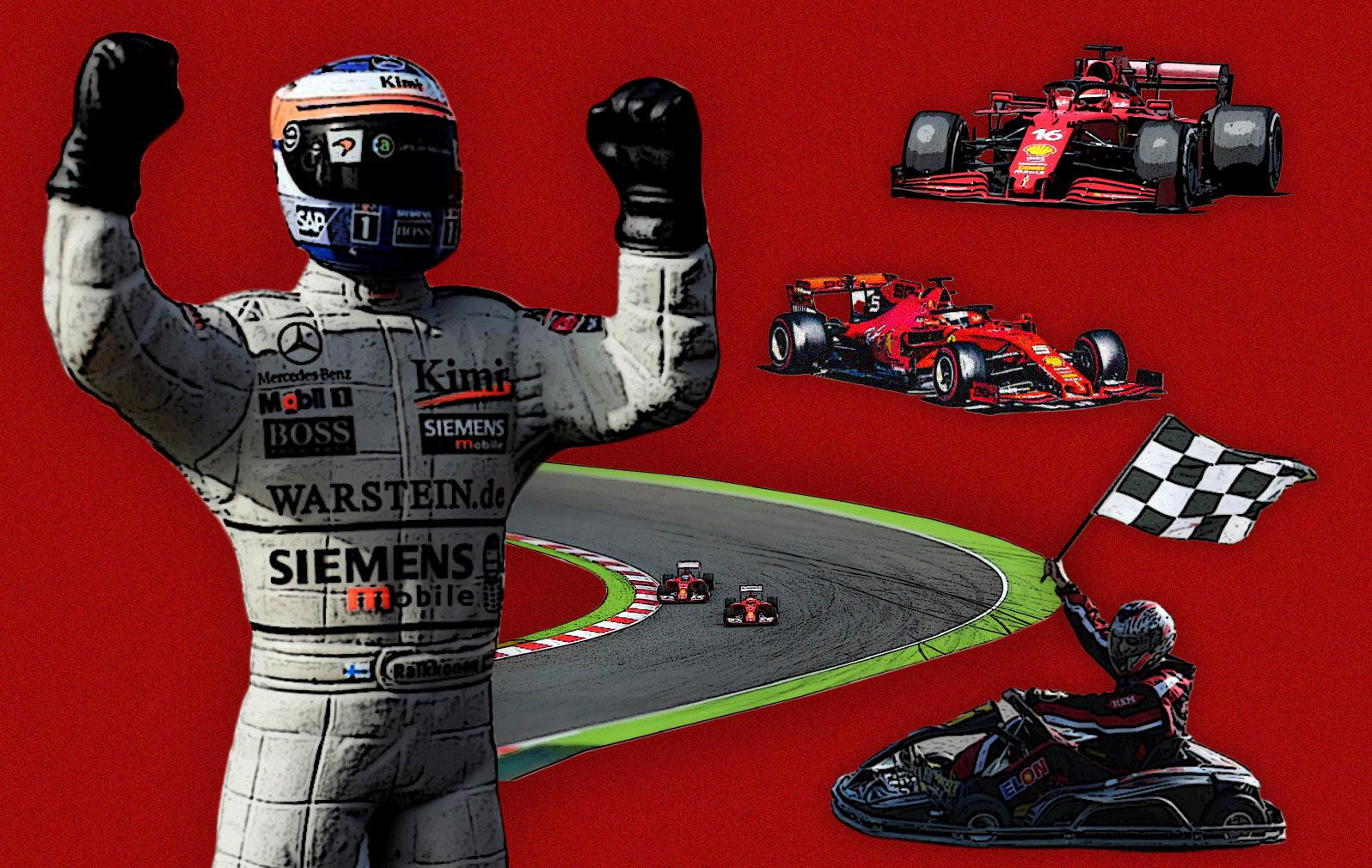
Ayrton Senna. In 2020, the British driver claimed his seventh Driver’s Championship, tying Schumacher’s record of most championships ever won.
He narrowly missed his eighth title against Verstappen in 2021, but continues to maintain a commanding presence in the sport.
“I’m hoping that he can win his eighth world championship with Ferrari,” says Kulasekaran, referring to Hamilton’s move from Mercedes to Ferrari in the 2025 season.
Charles Leclerc, often regarded as a fan favourite, may have the saddest family background on the whole grid. His godfather, Jules Bianchi, tragically passed after a horrific accident at the 2014 Japanese Grand Prix, and his father, Hervé Leclerc, passed away just four days before Leclerc’s Formula 2 win.
In the 2024 season, Leclerc finally broke the “Monaco curse” with a win at his home race, after five years of turmoil.
Being paired with Hamilton will be something to watch, as balancing these two powerful drivers could make or break Ferrari’s performance this season.
In addition to the big-name drivers, six rookies are making their F1 debuts this season: Andrea Kimi Antonelli, Liam Lawson, Oliver Bearman, Gabriel Bortoleto, Jack Doohan and Isack Hadjar.
Apart from the big names and rookies, this season, the rest of the grid consists of these drivers: Pierre Gasly, Fernando Alonso, Lance Stroll, Alex Albon, Carlos Sainz Jr., George Russell, Oscar Piastri, Yuki Tsunoda, Esteban Ocon and Niko Hülkenberg.
The Tyres
Since 2011, Pirelli has been the exclusive tyre supplier for F1. For each race weekend, they provide teams with three dry compounds: soft, medium and hard.
Soft tyres offer the most grip — making them the fastest tyres — but degrade quickly. They are ideal for qualifying runs.
The hard compound is the opposite — lasting much longer but offering less grip — while mediums offer a balance between performance and durability, so the medium and hard compounds are likely more favourable options over a longer race distance.
While tyre types are important in a race strategy,

how a team decides to use them can make the difference between quicker lap times and a possible win.
A combination of dry and wet conditions is the most difficult to deal with because it can be hard to determine whether — and when — to switch to intermediates or wets. Intermediates are ideal for slight rain or a partially wet track, whereas full wets are used when the sky fully opens up.
In these cases, it comes down to communication between the pit wall and the driver, especially when deciding to call a driver in for a pit stop.
The Pit Stops
Pit stops are high-stakes moments. A driver’s delay of even a 10th of a second could cost them a good position in a race and a possible podium spot for the team.
“I still remember Monaco 2016 when [Red Bull] screwed up with Daniel Ricciardo,” says Srivastava. “They called him in and didn’t have the tyres ready, so he was stuck in the pit box.”
Srivastava was referring to the 2016 Monaco Grand Prix, where a bad pit stop error from Red Bull cost their driver at the time, Ricciardo, an almost certain race win.
Pit stops are mandatory — each team must complete at least one, except if it’s raining throughout the race — and drivers must use at least two different compound tyres. It is up to a team to determine when to call a driver in and which tyres to use.
If a pit stop team isn’t on their game or something is wrong with the car — sometimes whole front wings have to be changed — it can cost the driver crucial seconds of stoppage that their opponents are using to get ahead of them on the track.
Precision is everything — McLaren currently holds F1’s world record for the fastest pit stop, clocking in at 1.80 seconds during the 2023 Qatar Grand Prix.
Further complicating the pit stop procedure is the possibility of pulling off an undercut or being overcut by another team. The undercut is the choice to pit a driver earlier than planned in the race, and the overcut is when a team decides to keep a driver out for longer — both with the intention of getting ahead of the driver in front
The Circuits
Adding to the complexity of this sport are the different track types: traditional and street circuits.
Traditional circuits, like Silverstone or Spa-Francorchamps, are purpose-built for racing, offering high-speed straights and wide corners. Since they are built in large open areas, there are more opportunities to overtake other drivers, and they have been the sites of many iconic takeover moves.
Street circuits, such as Singapore and Las Vegas, are temporary tracks built on public roads in the middle of cities. They are narrower, bumpier and more challenging, with a small margin for error. One misjudged corner can send a driver into the barriers at hundreds of kilometres per hour.
“The night races on a street circuit are so mesmerizing … most of the best quality of racing comes from the visuals of these cars in the middle of a city,” says Ryan Fazl, a third-year Ivey Business School student and vice-president of events of the Western Formula 1 club.
One of the most infamous street circuits in the world is Monaco, known for its nearly impossible margins for overtaking. Chances are, how you start in Monaco is usually how you finish.
There are 10 teams to choose from, and 20 different drivers, so who do you root for? Well, my untechnical advice is to follow your gut. Choose who you like, and who cares about the reason?
“Choose who you want to root for based on a driver you might like as a person,” says Sisson. “I’d go directly to the driver’s and the team’s social media to see who they are. You’re likely to see the most accurate representation of them there.”
There’s a lot of drama, especially regarding the driver and team perception that circulates in the media. Ignore that. Do your research, and don’t let other people influence your curiosity about the sport.
Now, to get technical: based on the last couple of years, McLaren would be a strong pick for new fans. McLaren has disrupted Red Bull’s domination, and as a historically strong team, it’s only a matter of time before they start to reclaim their past glory.

“A really exhausting part of having ADHD is trying to constantly explain and articulate what you’re dealing with, to be able to get the supports that you need.”
- Renee Laurin
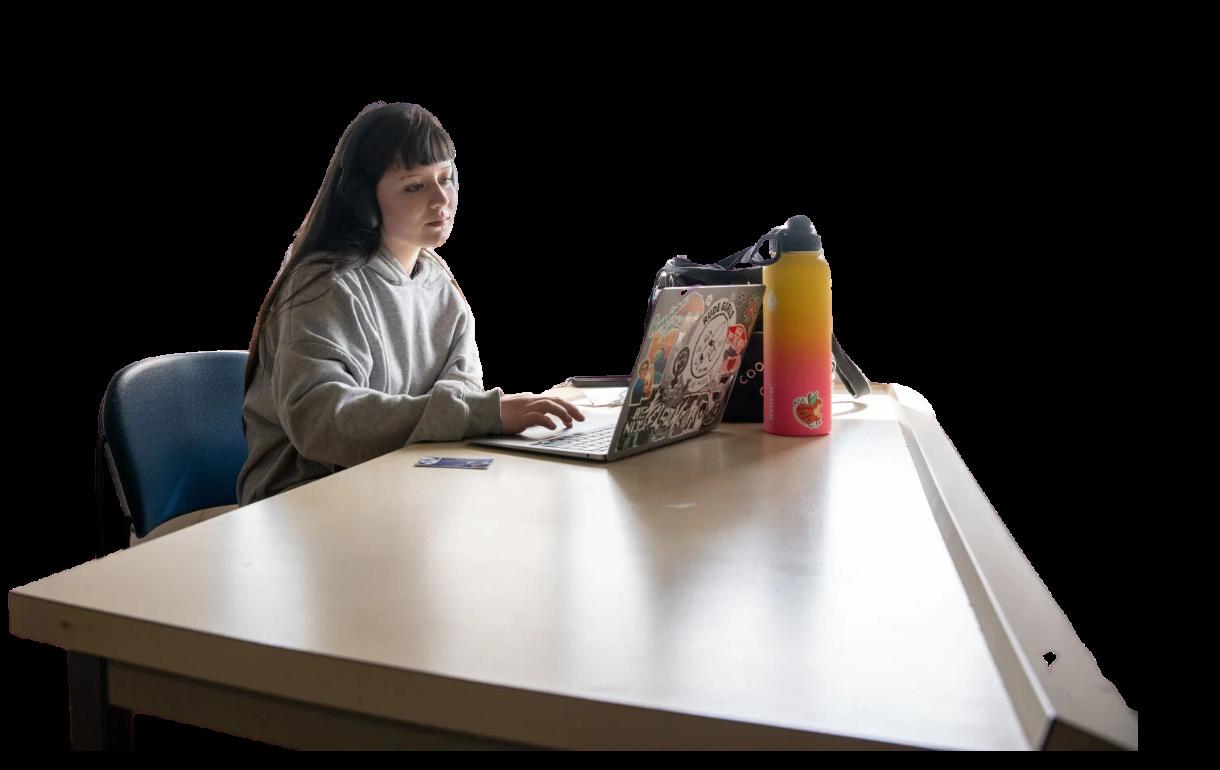
“It made me think very seriously — which I probably hadn’t done before — how much history can we really trust because it’s written by the victors. It’s written by the powerful.”
- Kathy Gannon
Journalist and Winter 2025 FIMS
“To tell the story of what your family is going through, the journeys they’ve been through, it’s kind of like my way of giving back.”
Second-year gender, sexuality and women’s studies student at Western University
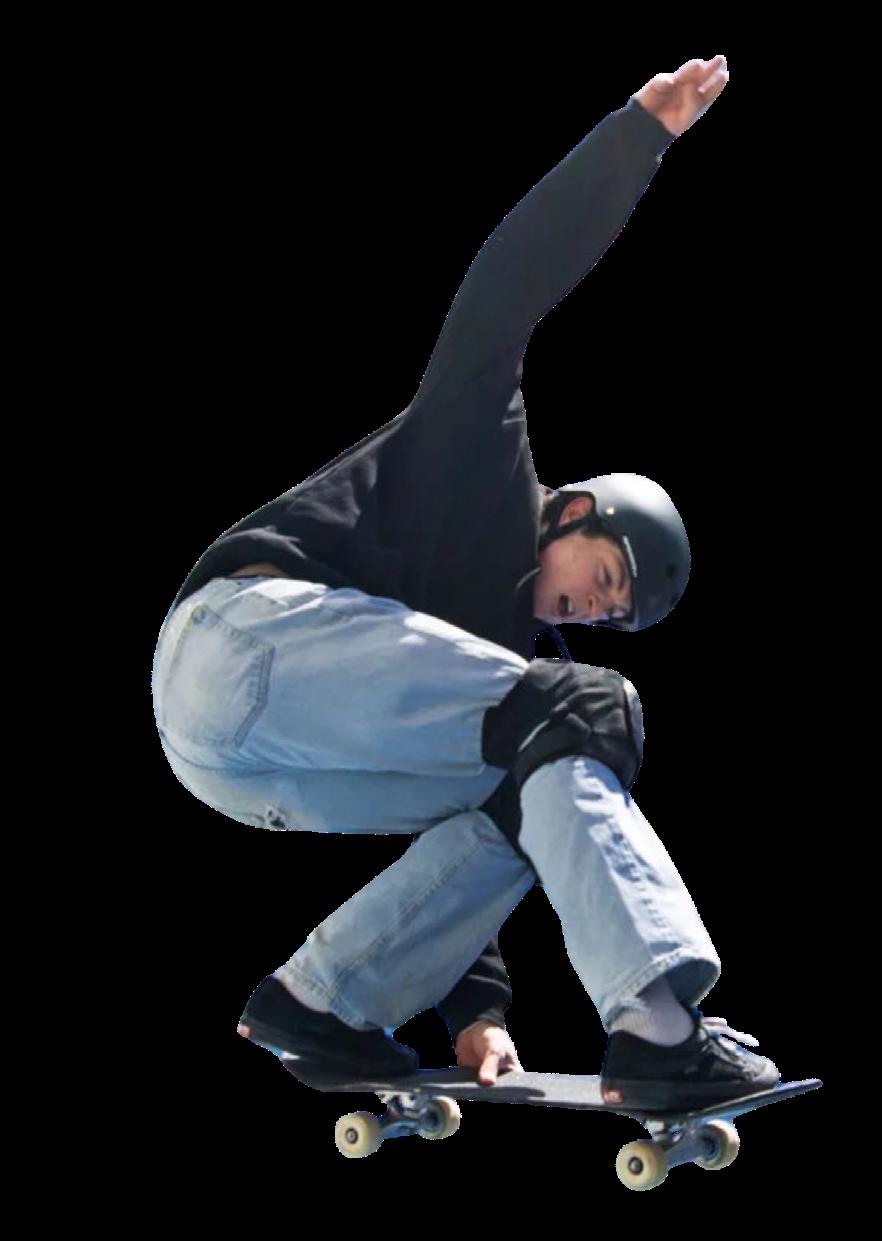
- Kyle French
Powwow dancer and Western special constable

1. Field-loving campus menace
6. Reap partner
9. Subject of Poe
10. British doctor
11. Slowly reduce, such as confidence
12. Might lend one
13. State authoritatively
15. US sports channel
18. Beehive state
19. Exam _____, phrase used by students
21. Syrup origin
22. Popular amusement park water ride
26. ___ mode
27. The circled letters might help a student with one
28. Common affirmative
29. Buy, sell, or trade one

1. MBA admissions test, maybe
2. Small boat essential
3. Western merchandise collaborator
4. Classic five-seat student vehicles
5. Chemical suffixes
6. Action or taste descriptor
7. Toronto-born Schitt’s Creek actress
8. It’s not ____ that much, common April mantra for students
14. Unlike study spaces at Taylor
15. F or G course definition
16. Bobby, who co-founded the Black Panthers
17. Fathers
20. Switch settings
23. Friendship ender
24. Common student device, for short
25. Velvet producer
“My whole life has been for this, so now it’s time to perform.”
- Richie Bullbrook
Canada’s top-ranked skateboarder and fourth-year BMOS student at Huron University College
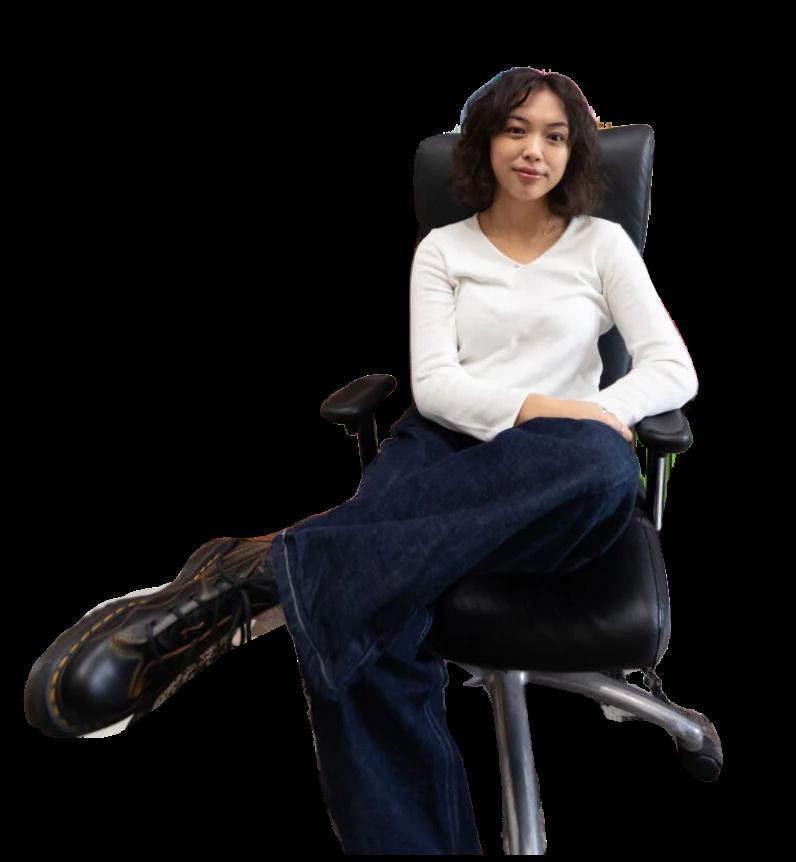
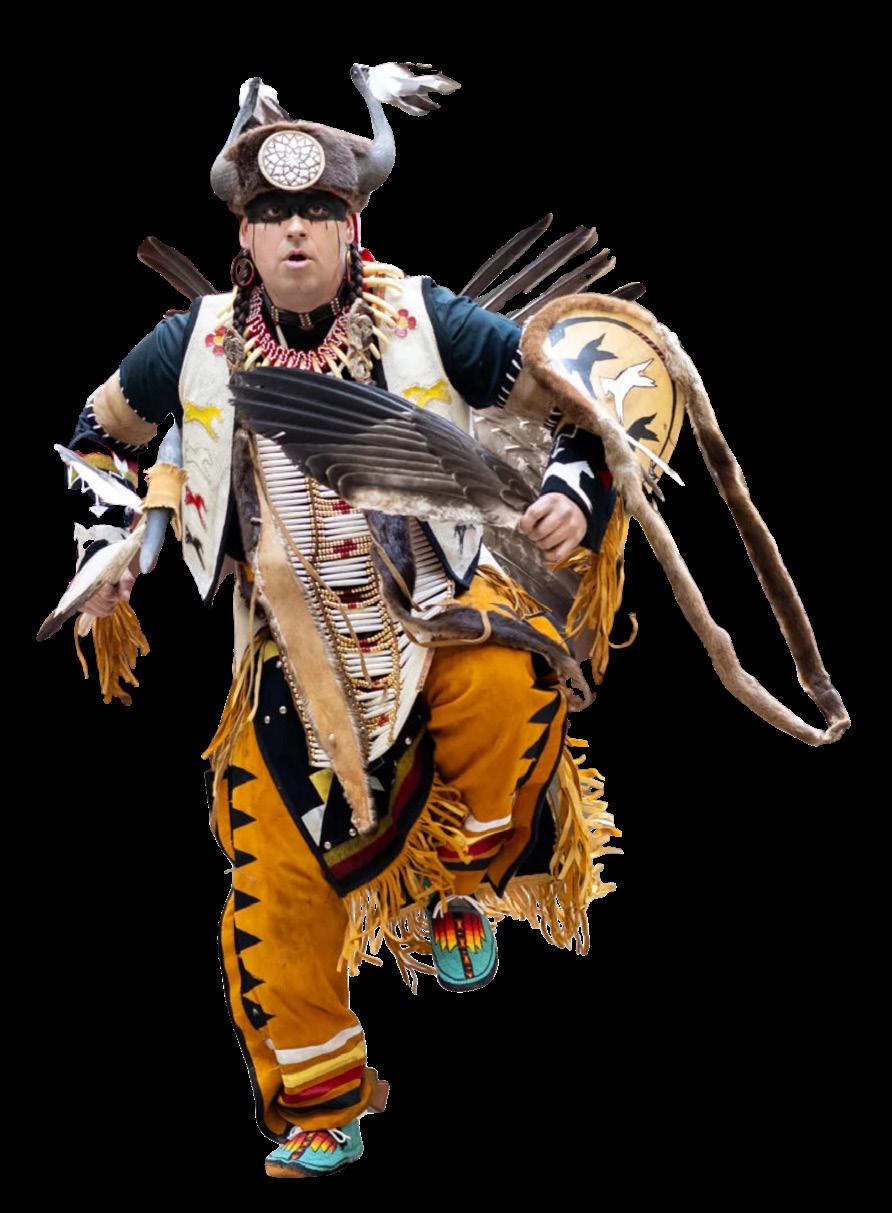
“It’s really scary to put your work out there because writing is inherently vulnerable and it’s like putting part of yourself out there. Being vulnerable and facing that fear is important.”
- Jules Lee
2024–25 student writer-in-residence and fourth-year English language and literature student at Western University
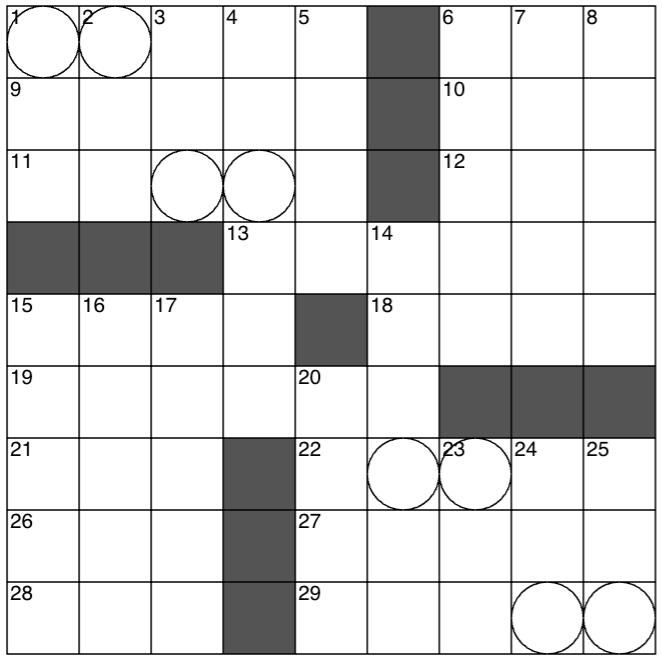
Email your comics or crosswords to managing@westerngazette.ca or come to UCC 263 and ask about volunteering for our Graphics section!